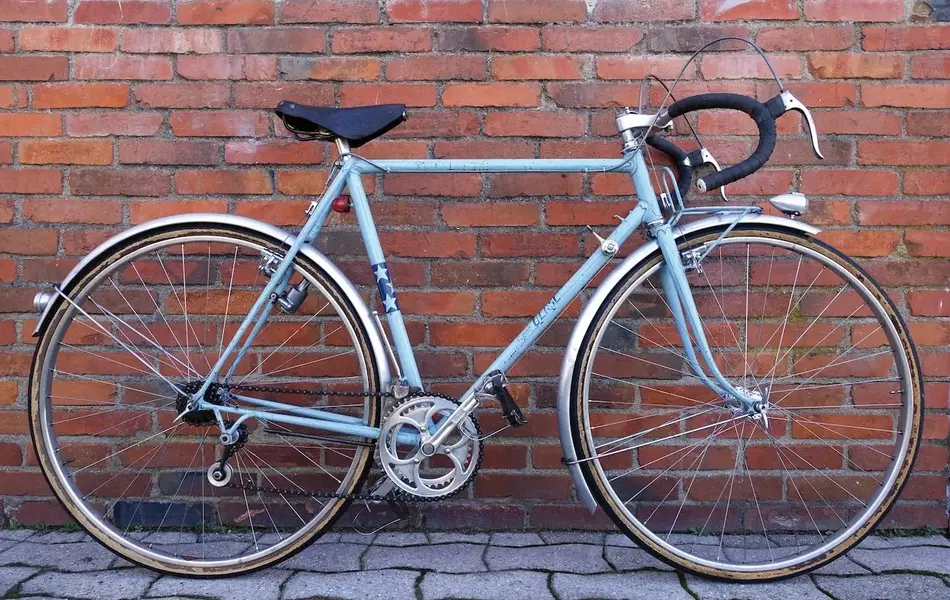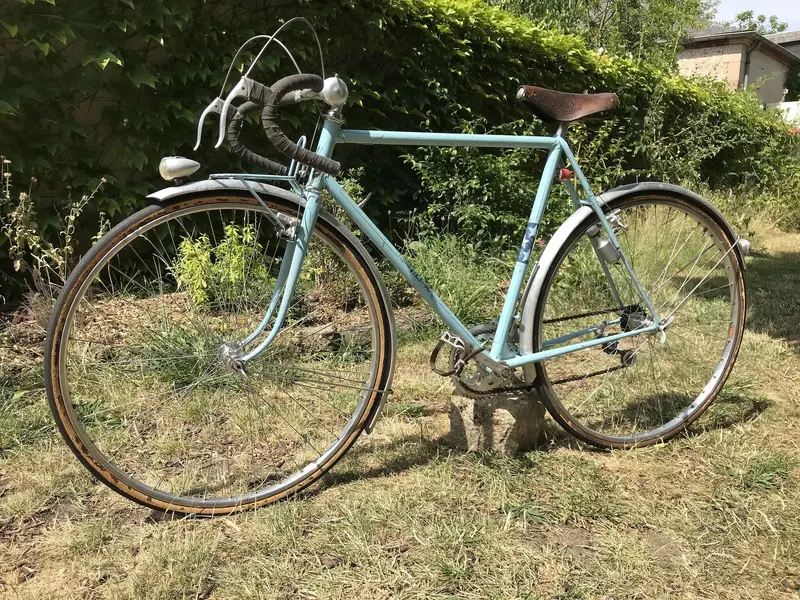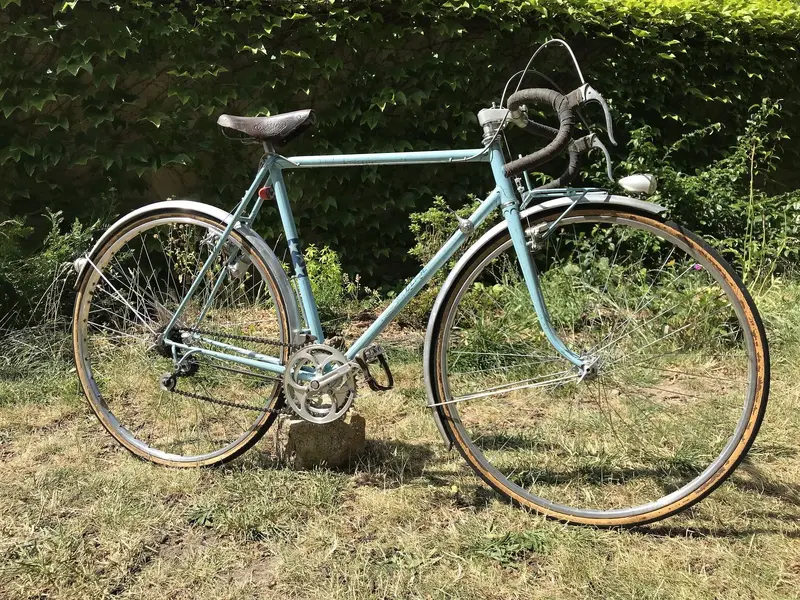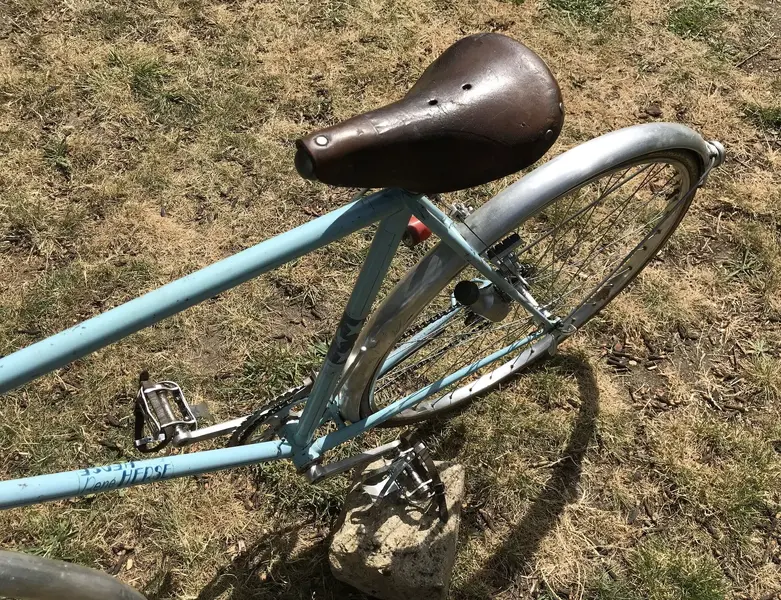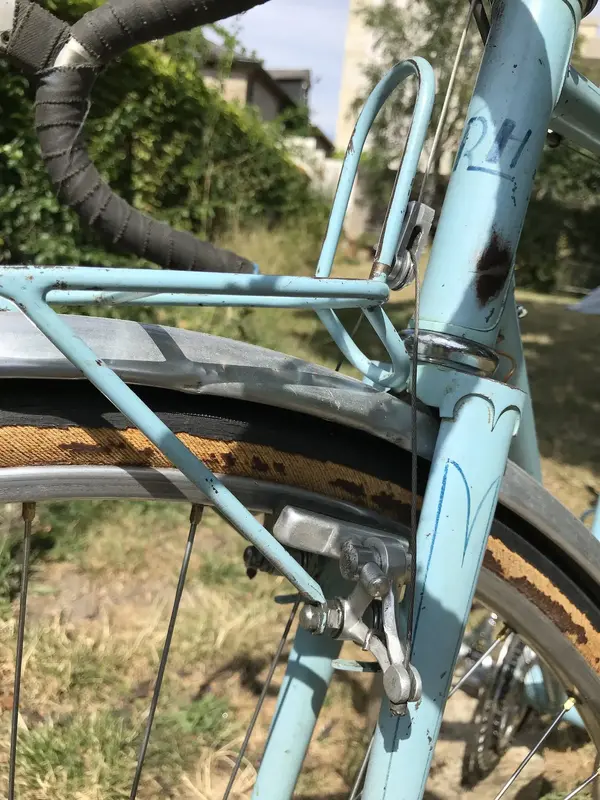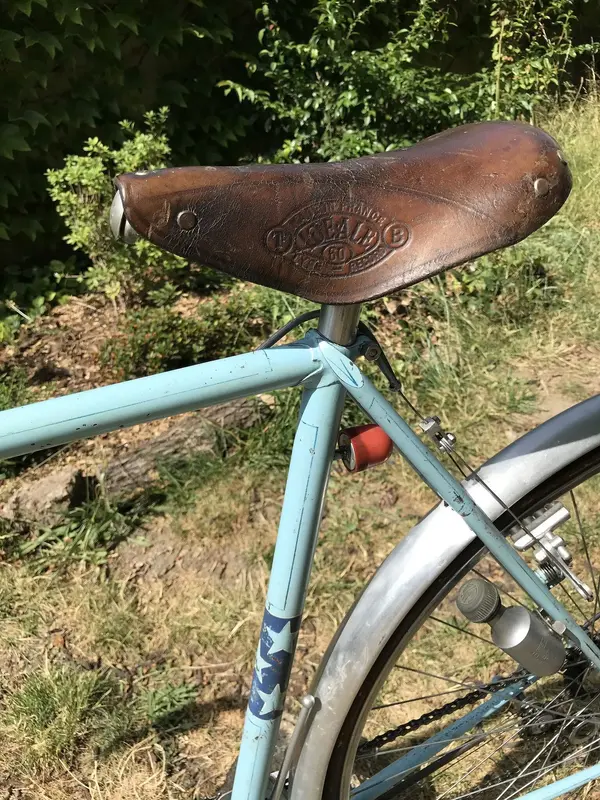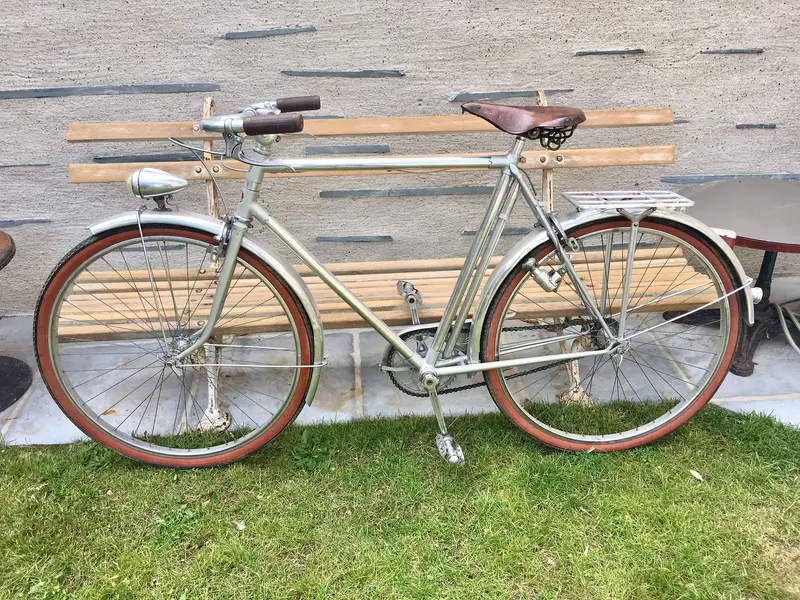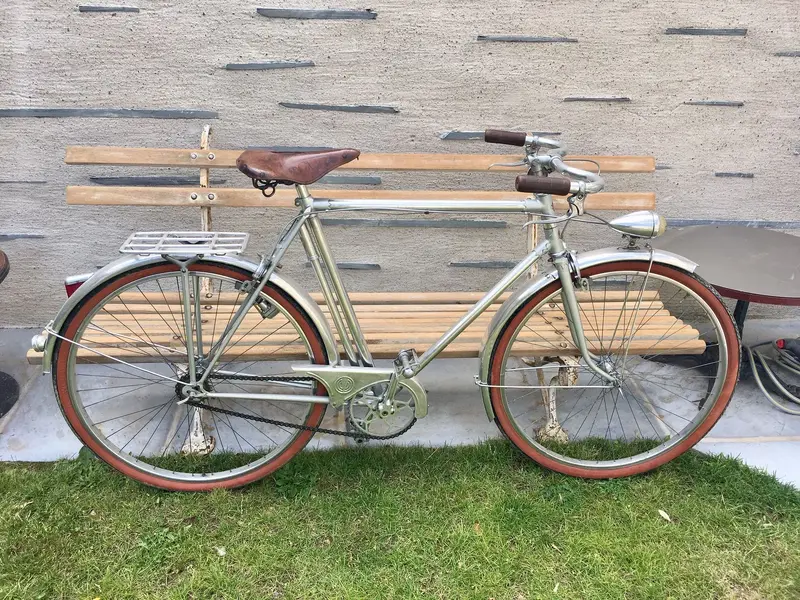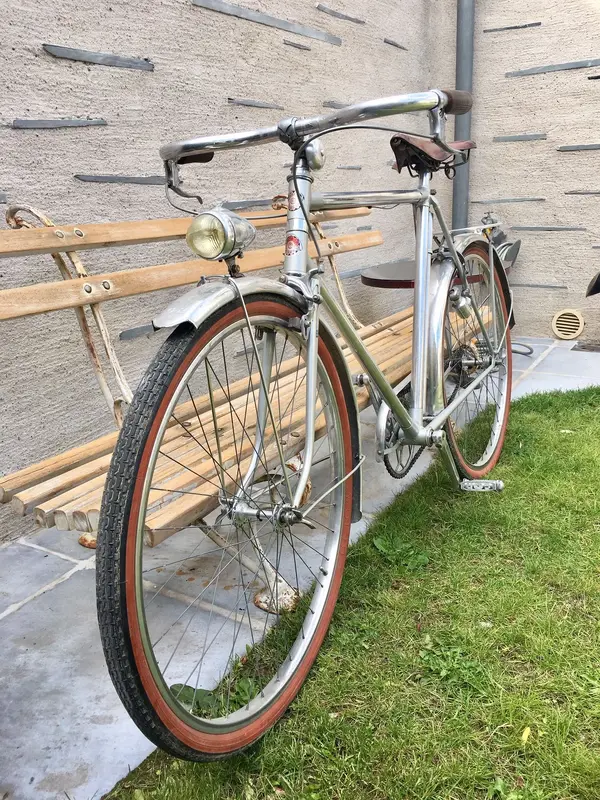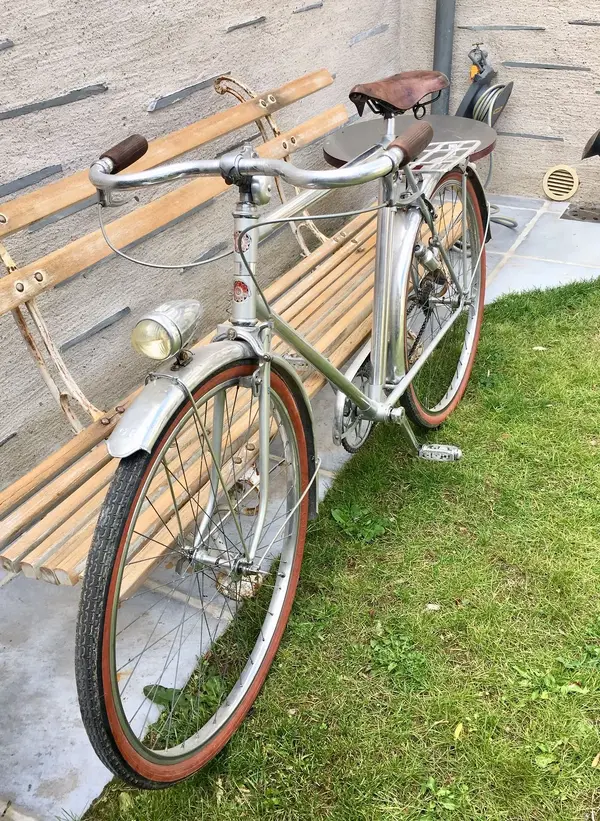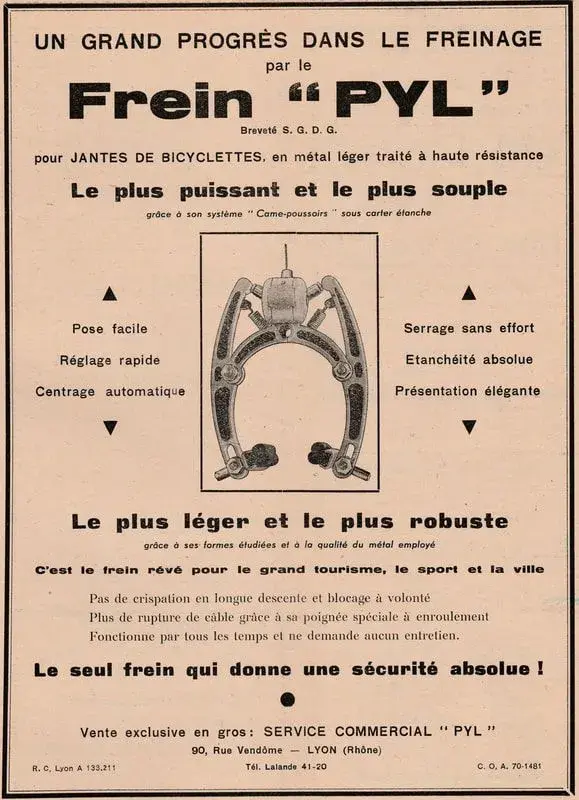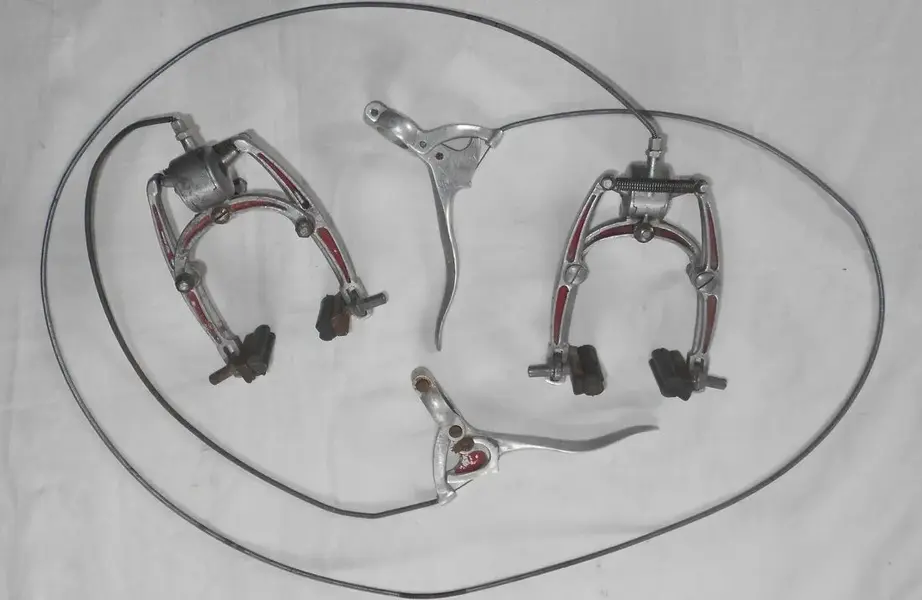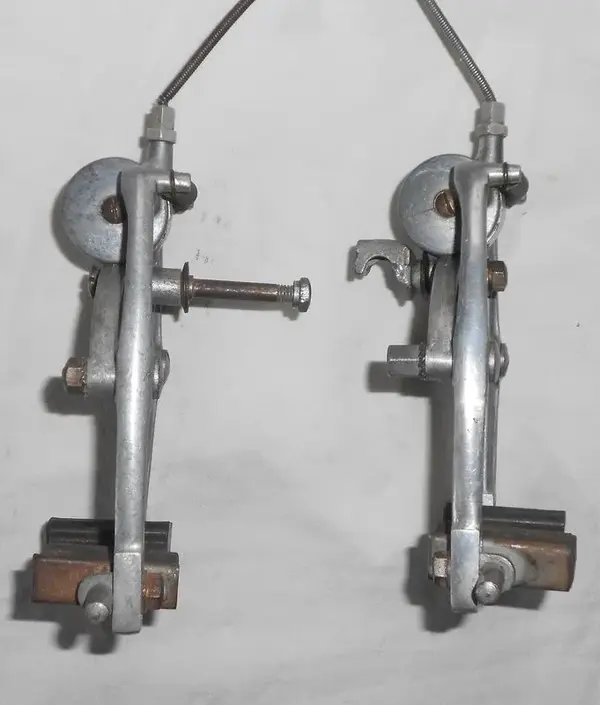Imagine how nice this would have looked in an army green rather than the dull greyEugene Erpalding, date unknown. Note the quick release rack and own branded components. Rene Herse was not alone in doing this.
You are using an out of date browser. It may not display this or other websites correctly.
You should upgrade or use an alternative browser.
You should upgrade or use an alternative browser.
Vintage French randonneuer's and porteurs.
- Thread starter Guinessisgoodforyou
- Start date
Guinessisgoodforyou
rBotM Winner
Rene Herse 1951, translation below.
A nice light René Herse racer in its original condition, N°14251, from 1951.
The only problem is a nasty crack above the steering knuckle and through it... but a Herse doesn't let itself go.
A Herse is not to be passed up... especially in the blue of the "official" team.
The Herse is at home... but only for a restoration. When I say restoration, it's the kind that you can't see, (a restoration, in fact!! ) a total dismantling, cleaning, checking, control... and we put it back together. Benoît still wants to ride (a little) with it... what an idea! So we secure it a bit, the spoking won't hold, oxidized, already a lot of spokes changed, so we redo, and especially reinforce, from the inside, the cracked steering sleeve.
There were two solutions, to completely rebuild the bike, paint it... or to keep it as much as possible in its original state, this solution seems much more reasonable. Moreover this bike is in a good condition, it doesn't seem to have moved too much, everything looks original.
It's a typical "Audax" 700 C "Cyclosportif" of the time, small front rack, 48/38 crankset... A bike to take down patents and other Velocio arrows, Poly, diagonals, 200, 400, 600, Paris Brest Paris... We can assume (be careful with assumptions) that the bike was originally equipped with tubular or aluminium rims. Considering the wear of the pedals, it has been ridden well, the oxidation is there too. As for the cracking, there are several possibilities: front shock? I would rather think that it was a problem upstream, during the manufacturing process, a clamping, and the tube wants to go back to its place, or a work on the marble for alignment... afterwards?
You can see on the picture that the paint was scraped off to see the extent of the damage
Looking at the bike, we can deduce that the customer didn't take all the options ($) no SKF housing, no chrome, a steel fork cyclo, no aluminium carriage, no big flange hubs ... a "simple" bike but still with the main Herse parts. As for the legendary Herse finish, how can I put it... I've seen better ! We'll see all that in detail.
I started with the most delicate part ... the reinforcement of the steering bushing. A simple tube to insert, but still a good hour to find the right tube, and a good hour to adjust the whole thing. Finally it's installed, with the Campa device that goes well, it went well. I wanted to make a reversible assembly, so it is possible to remove this prosthesis, no worries. Benoît will see in time if it wants to hold... but it will hold!
Otherwise the frame is made of Avialux tubes. If it speaks to someone (??), no trace on the net, at least very few, two or three bikes... I would lean for a Vitus range, but...? Rereading the "Bible" (Jan Heine's book) it mentions that Herse used Vitus and Reynolds tubes, speedy tubes (reynolds), but nothing from Avialux.
The frame weighs around 2 kg, nothing exceptional.
It's coming along!!! Cleaned the frame, fork and a few parts, some sunflower and lots of elbow grease
No polish, w40... niet!!! I keep the patina as much as possible. I don't put too much emphasis on the paint, it fades, like the fillets quite easily.
Reading different articles about Herse, we often talk about the Rolls of the bike, certainly... but also "Herse was watching everything, meticulous..." well that day Herse was not there ? I still have a bit of trouble with some of the finishing touches, like this hole on a seat connector, file marks, on the front derailleur (you have to force it to be mounted and dismounted, not great), mounting of the mudguards in a hurry, the drilling of the stem tube stop is not centered.... I know other craftsmen who are much less "prized" and who wouldn't have let a bike leave the workshop like that Looking at other Herse bikes, I see that there are many differences in the finish... budget issues?
WD-40 was developed in 1953 by Norman Larsen, founder of the Rocket Chemical Company, in San Diego, California. "WD-40" is short for "Water Displacement, 40th formula", suggesting that it was the result of Larsen's 40th attempt to create the product.
Water Displacement. Before it was considered a de-sealer (rightly or wrongly?) it was used to remove moisture and prevent it from re-installing. Instead of dismantling them, they used to fill electric motors that no longer worked and, once dry, worked again. Very bad for your health, but anyway, you have to die of something, I use it for everything.
The brakes are also well made, simple and work. The skate holders are not original (Mafac) but I keep... it goes.
The bike is progressing, at least the reassembly. Spoking of the front wheel, as I said, the spokes are too oxidized... so I change with the same type of steel spokes of the 3 stars! The rims supplied by Benoît are a nice pair of Mavic Criterium, with tyres that fit perfectly. The bike is reassembled with a new cable... and the mudguards. These RBN Durex mudguards are a real treat, soft as a rag! They are worked with the finger! I understand why it's hard to find them in good condition. Herse liked this model, and it got him disqualified at Chanteloup in 1951 (broken mudguard at the fixing). From this date onwards, he installed a reinforcement (diamond). The bike presented does not have this reinforcement (option?) and the mudguard is... broken!
Otherwise the handlebar is well of the race type, it is marked on it... Charles Pelissier. Small home-made fixing of the headlight, but no more adjustment of this one !
A nice light René Herse racer in its original condition, N°14251, from 1951.
The only problem is a nasty crack above the steering knuckle and through it... but a Herse doesn't let itself go.
A Herse is not to be passed up... especially in the blue of the "official" team.
The Herse is at home... but only for a restoration. When I say restoration, it's the kind that you can't see, (a restoration, in fact!! ) a total dismantling, cleaning, checking, control... and we put it back together. Benoît still wants to ride (a little) with it... what an idea! So we secure it a bit, the spoking won't hold, oxidized, already a lot of spokes changed, so we redo, and especially reinforce, from the inside, the cracked steering sleeve.
There were two solutions, to completely rebuild the bike, paint it... or to keep it as much as possible in its original state, this solution seems much more reasonable. Moreover this bike is in a good condition, it doesn't seem to have moved too much, everything looks original.
It's a typical "Audax" 700 C "Cyclosportif" of the time, small front rack, 48/38 crankset... A bike to take down patents and other Velocio arrows, Poly, diagonals, 200, 400, 600, Paris Brest Paris... We can assume (be careful with assumptions) that the bike was originally equipped with tubular or aluminium rims. Considering the wear of the pedals, it has been ridden well, the oxidation is there too. As for the cracking, there are several possibilities: front shock? I would rather think that it was a problem upstream, during the manufacturing process, a clamping, and the tube wants to go back to its place, or a work on the marble for alignment... afterwards?
You can see on the picture that the paint was scraped off to see the extent of the damage
Looking at the bike, we can deduce that the customer didn't take all the options ($) no SKF housing, no chrome, a steel fork cyclo, no aluminium carriage, no big flange hubs ... a "simple" bike but still with the main Herse parts. As for the legendary Herse finish, how can I put it... I've seen better ! We'll see all that in detail.
I started with the most delicate part ... the reinforcement of the steering bushing. A simple tube to insert, but still a good hour to find the right tube, and a good hour to adjust the whole thing. Finally it's installed, with the Campa device that goes well, it went well. I wanted to make a reversible assembly, so it is possible to remove this prosthesis, no worries. Benoît will see in time if it wants to hold... but it will hold!
Otherwise the frame is made of Avialux tubes. If it speaks to someone (??), no trace on the net, at least very few, two or three bikes... I would lean for a Vitus range, but...? Rereading the "Bible" (Jan Heine's book) it mentions that Herse used Vitus and Reynolds tubes, speedy tubes (reynolds), but nothing from Avialux.
The frame weighs around 2 kg, nothing exceptional.
It's coming along!!! Cleaned the frame, fork and a few parts, some sunflower and lots of elbow grease
No polish, w40... niet!!! I keep the patina as much as possible. I don't put too much emphasis on the paint, it fades, like the fillets quite easily.
Reading different articles about Herse, we often talk about the Rolls of the bike, certainly... but also "Herse was watching everything, meticulous..." well that day Herse was not there ? I still have a bit of trouble with some of the finishing touches, like this hole on a seat connector, file marks, on the front derailleur (you have to force it to be mounted and dismounted, not great), mounting of the mudguards in a hurry, the drilling of the stem tube stop is not centered.... I know other craftsmen who are much less "prized" and who wouldn't have let a bike leave the workshop like that Looking at other Herse bikes, I see that there are many differences in the finish... budget issues?
WD-40 was developed in 1953 by Norman Larsen, founder of the Rocket Chemical Company, in San Diego, California. "WD-40" is short for "Water Displacement, 40th formula", suggesting that it was the result of Larsen's 40th attempt to create the product.
Water Displacement. Before it was considered a de-sealer (rightly or wrongly?) it was used to remove moisture and prevent it from re-installing. Instead of dismantling them, they used to fill electric motors that no longer worked and, once dry, worked again. Very bad for your health, but anyway, you have to die of something, I use it for everything.
The brakes are also well made, simple and work. The skate holders are not original (Mafac) but I keep... it goes.
The bike is progressing, at least the reassembly. Spoking of the front wheel, as I said, the spokes are too oxidized... so I change with the same type of steel spokes of the 3 stars! The rims supplied by Benoît are a nice pair of Mavic Criterium, with tyres that fit perfectly. The bike is reassembled with a new cable... and the mudguards. These RBN Durex mudguards are a real treat, soft as a rag! They are worked with the finger! I understand why it's hard to find them in good condition. Herse liked this model, and it got him disqualified at Chanteloup in 1951 (broken mudguard at the fixing). From this date onwards, he installed a reinforcement (diamond). The bike presented does not have this reinforcement (option?) and the mudguard is... broken!
Otherwise the handlebar is well of the race type, it is marked on it... Charles Pelissier. Small home-made fixing of the headlight, but no more adjustment of this one !
Attachments
-
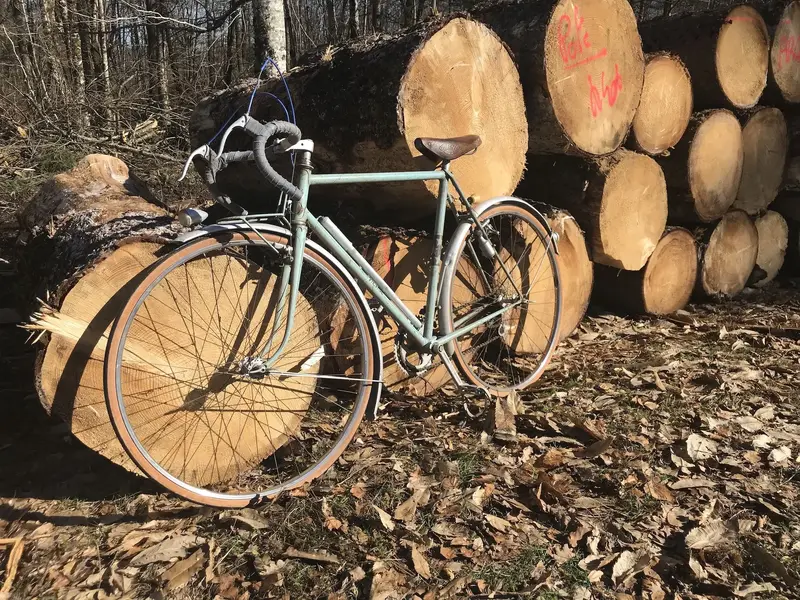 1951 ReneHerse1.webp846 KB · Views: 22
1951 ReneHerse1.webp846 KB · Views: 22 -
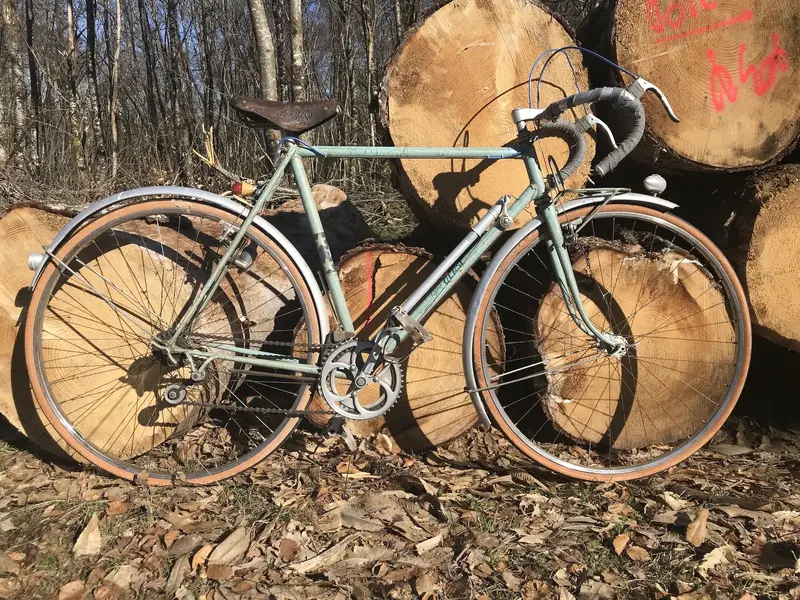 1951 ReneHerse2.webp916.3 KB · Views: 19
1951 ReneHerse2.webp916.3 KB · Views: 19 -
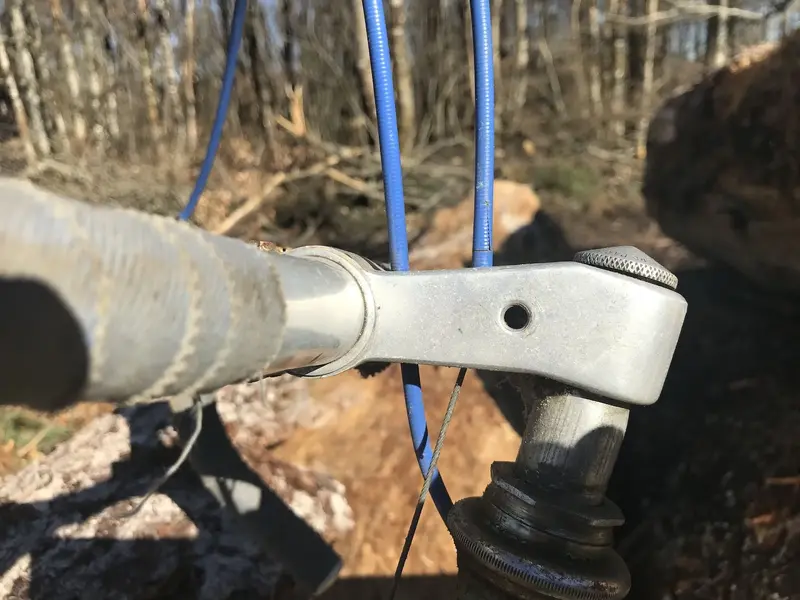 1951 ReneHerse3.webp206.4 KB · Views: 20
1951 ReneHerse3.webp206.4 KB · Views: 20 -
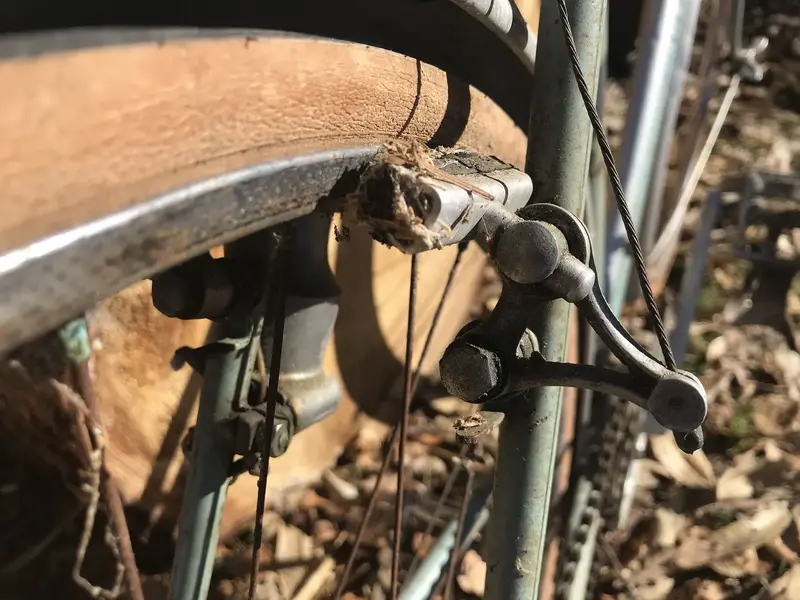 1951 ReneHerse4.webp222.2 KB · Views: 15
1951 ReneHerse4.webp222.2 KB · Views: 15 -
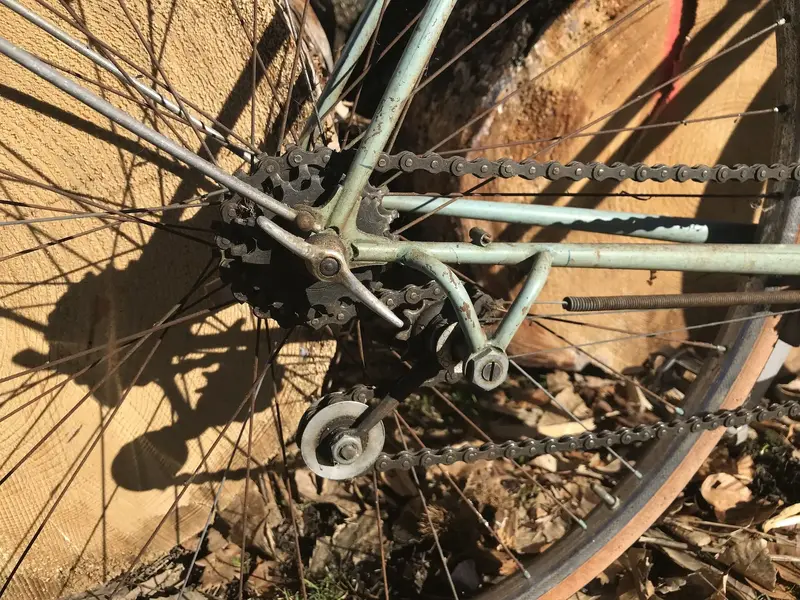 1951 ReneHerse5.webp444.9 KB · Views: 15
1951 ReneHerse5.webp444.9 KB · Views: 15 -
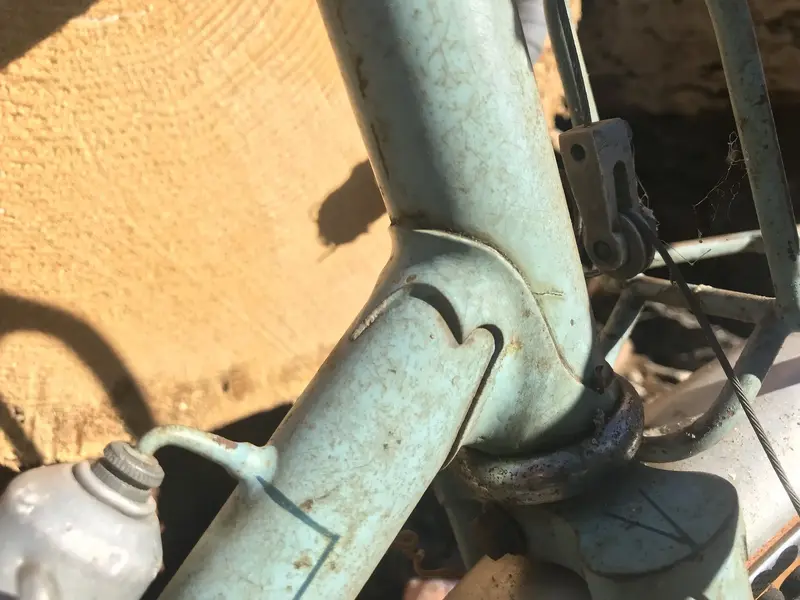 1951 ReneHerse6.webp174.7 KB · Views: 15
1951 ReneHerse6.webp174.7 KB · Views: 15 -
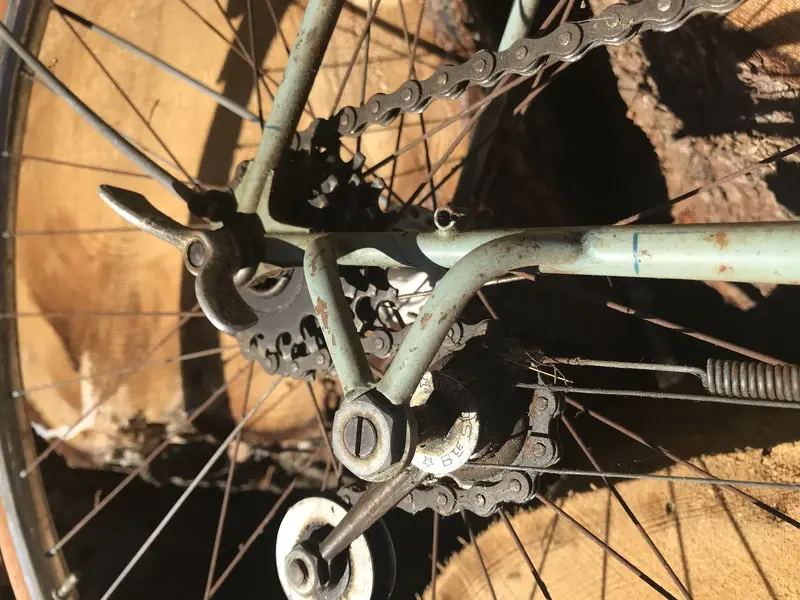 1951 ReneHerse7.webp260.2 KB · Views: 12
1951 ReneHerse7.webp260.2 KB · Views: 12 -
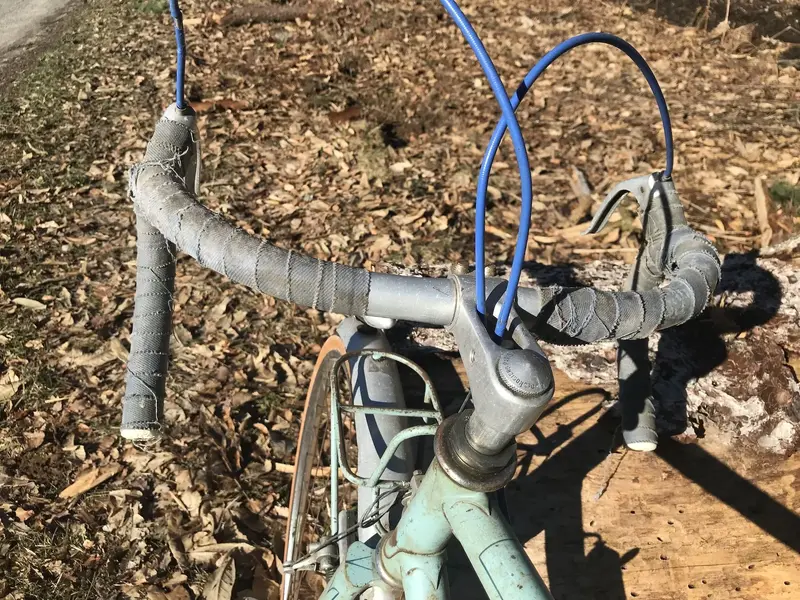 1951 ReneHerse8.webp559.9 KB · Views: 12
1951 ReneHerse8.webp559.9 KB · Views: 12 -
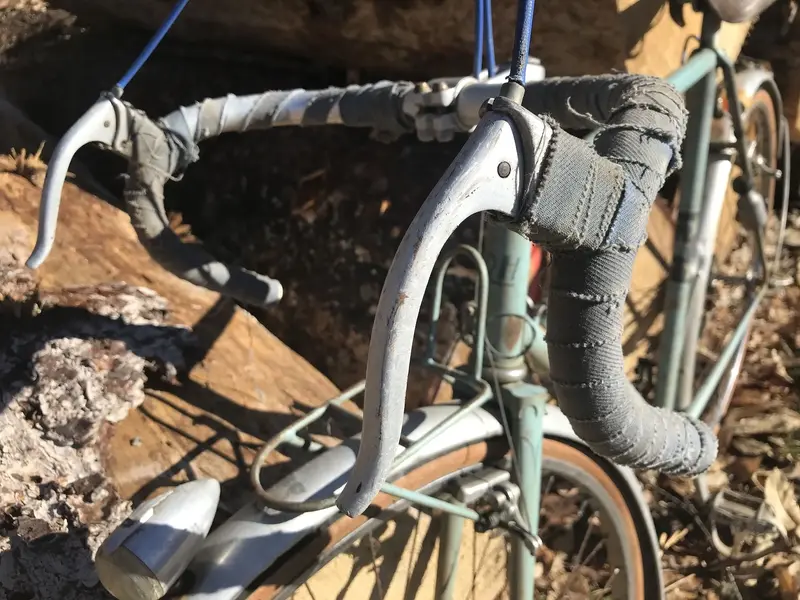 1951 ReneHerse9.webp268 KB · Views: 12
1951 ReneHerse9.webp268 KB · Views: 12 -
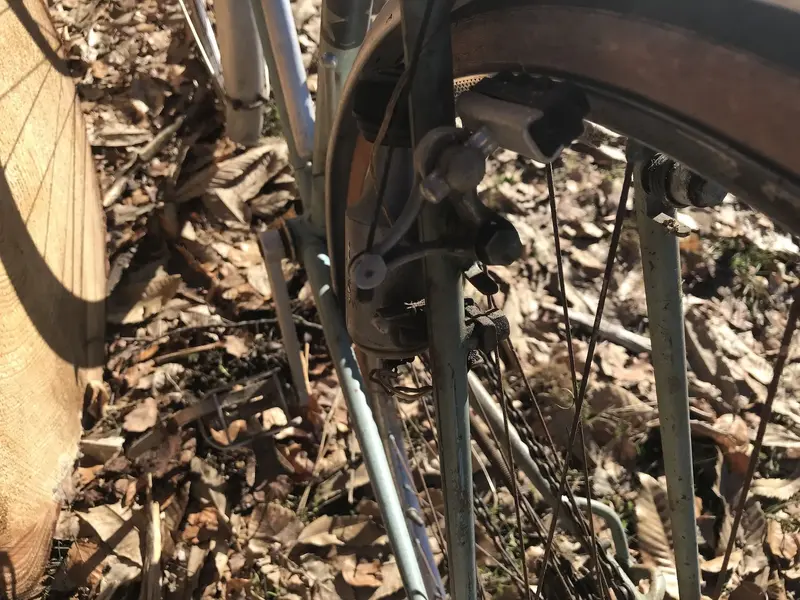 1951 ReneHerse10.webp305.4 KB · Views: 17
1951 ReneHerse10.webp305.4 KB · Views: 17
Guinessisgoodforyou
rBotM Winner
More.
Attachments
-
 1951 ReneHerse11.webp281.7 KB · Views: 5
1951 ReneHerse11.webp281.7 KB · Views: 5 -
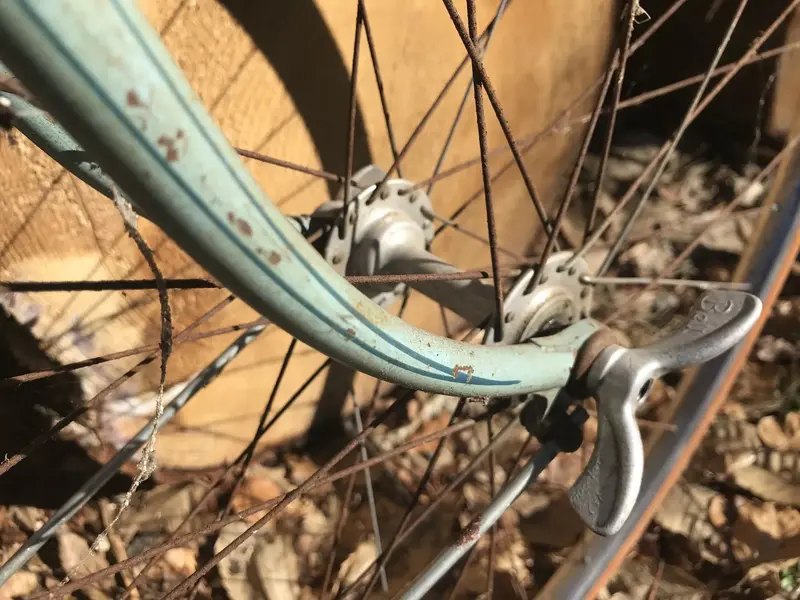 1951 ReneHerse12.webp205.8 KB · Views: 4
1951 ReneHerse12.webp205.8 KB · Views: 4 -
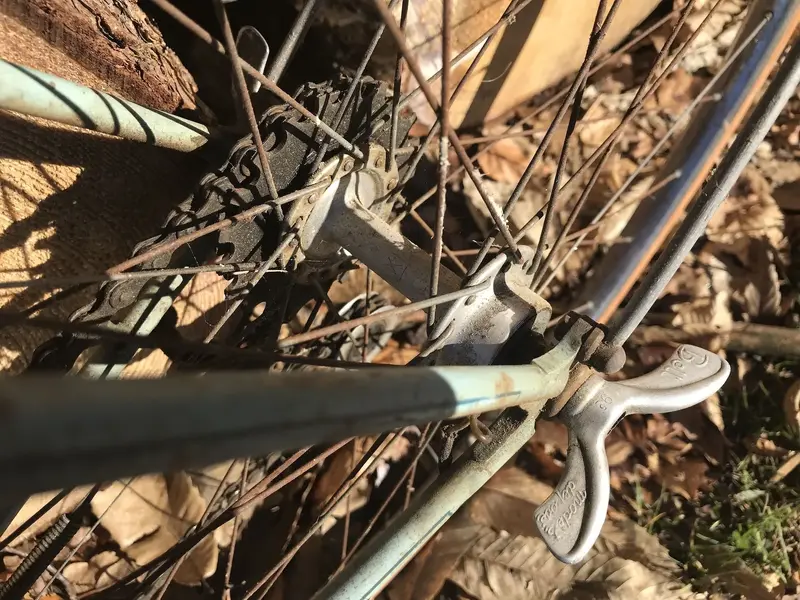 1951 ReneHerse13.webp396.2 KB · Views: 5
1951 ReneHerse13.webp396.2 KB · Views: 5 -
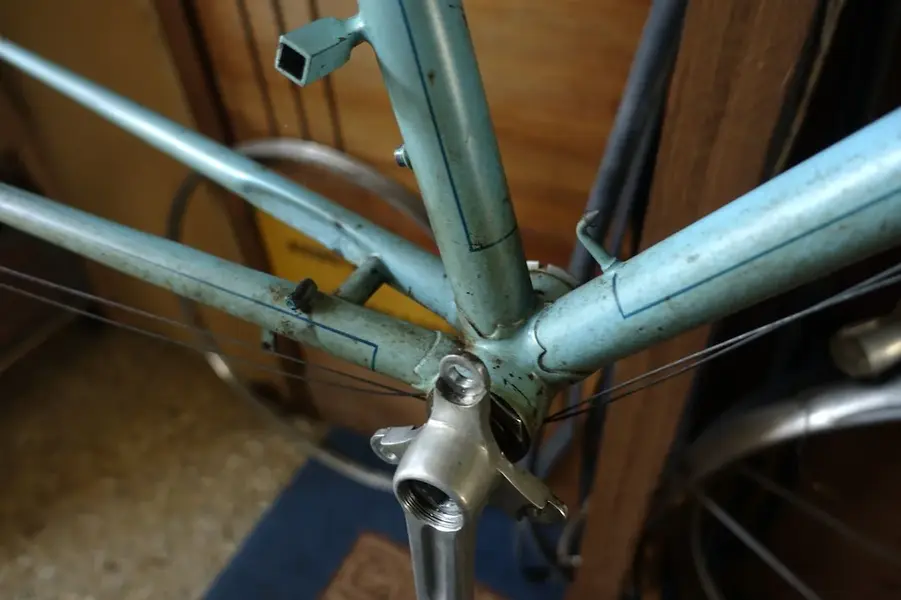 1951 ReneHerse14.webp49.9 KB · Views: 5
1951 ReneHerse14.webp49.9 KB · Views: 5 -
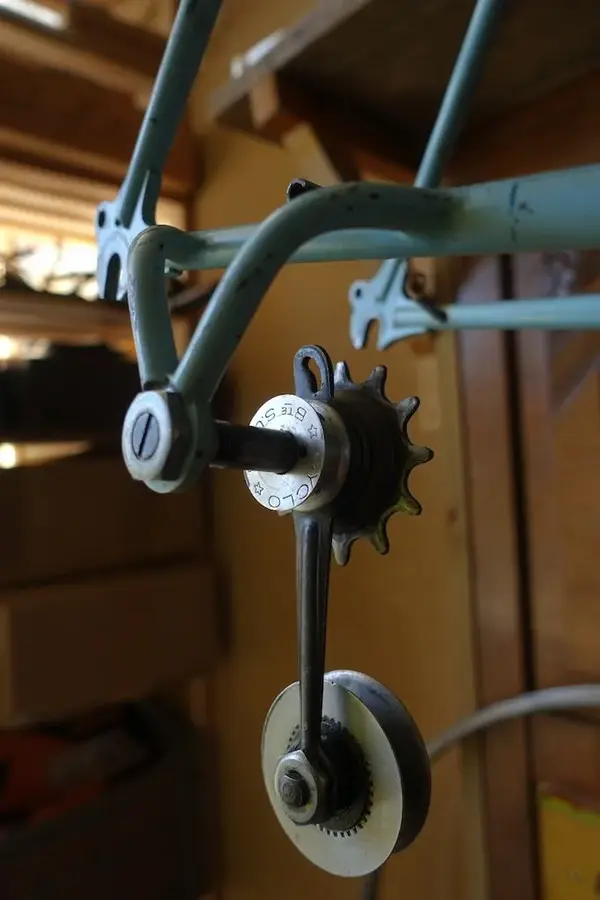 1951 ReneHerse15.webp31.6 KB · Views: 8
1951 ReneHerse15.webp31.6 KB · Views: 8 -
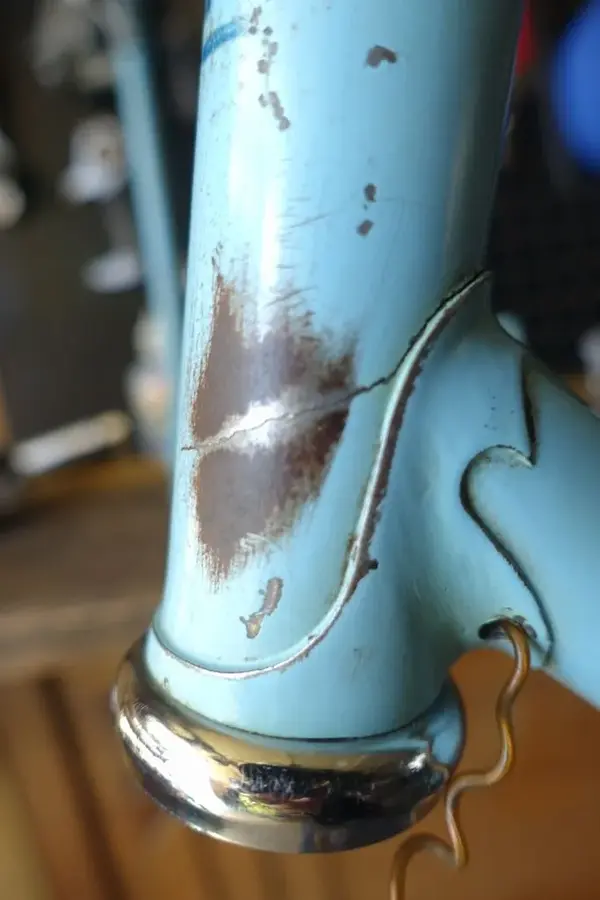 1951 ReneHerse16.webp32.7 KB · Views: 7
1951 ReneHerse16.webp32.7 KB · Views: 7 -
 1951 ReneHerse19.webp56.9 KB · Views: 5
1951 ReneHerse19.webp56.9 KB · Views: 5 -
 1951 ReneHerse20.webp47.2 KB · Views: 4
1951 ReneHerse20.webp47.2 KB · Views: 4 -
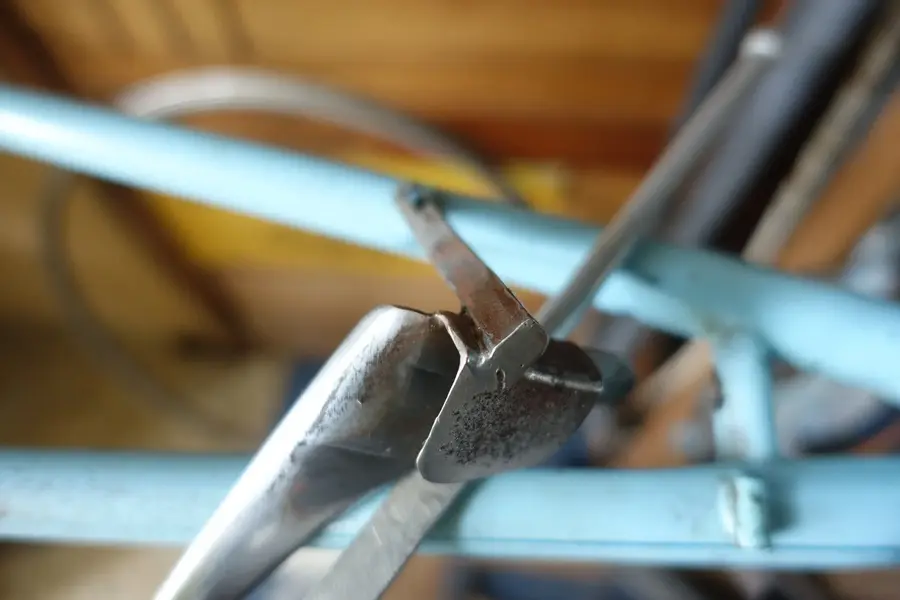 1951 ReneHerse21.webp75.9 KB · Views: 4
1951 ReneHerse21.webp75.9 KB · Views: 4 -
 1951 ReneHerse22.webp80.1 KB · Views: 5
1951 ReneHerse22.webp80.1 KB · Views: 5
Guinessisgoodforyou
rBotM Winner
More.
Attachments
-
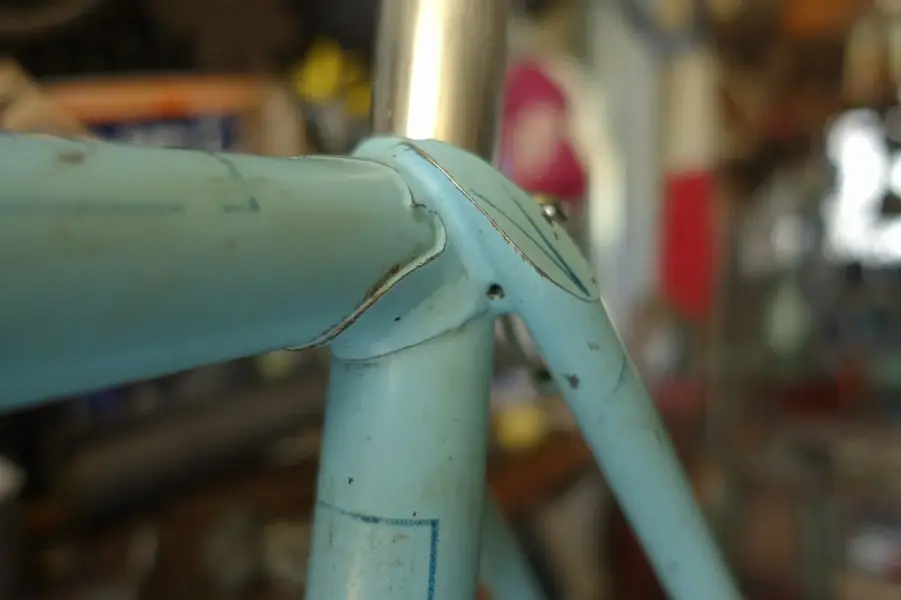 1951 ReneHerse23.webp27.5 KB · Views: 4
1951 ReneHerse23.webp27.5 KB · Views: 4 -
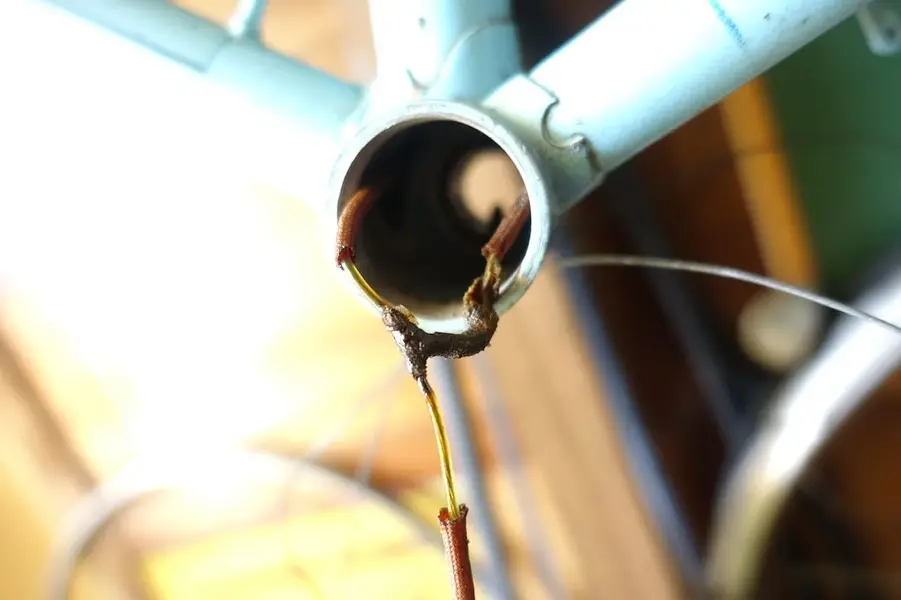 1951 ReneHerse24.webp32.5 KB · Views: 5
1951 ReneHerse24.webp32.5 KB · Views: 5 -
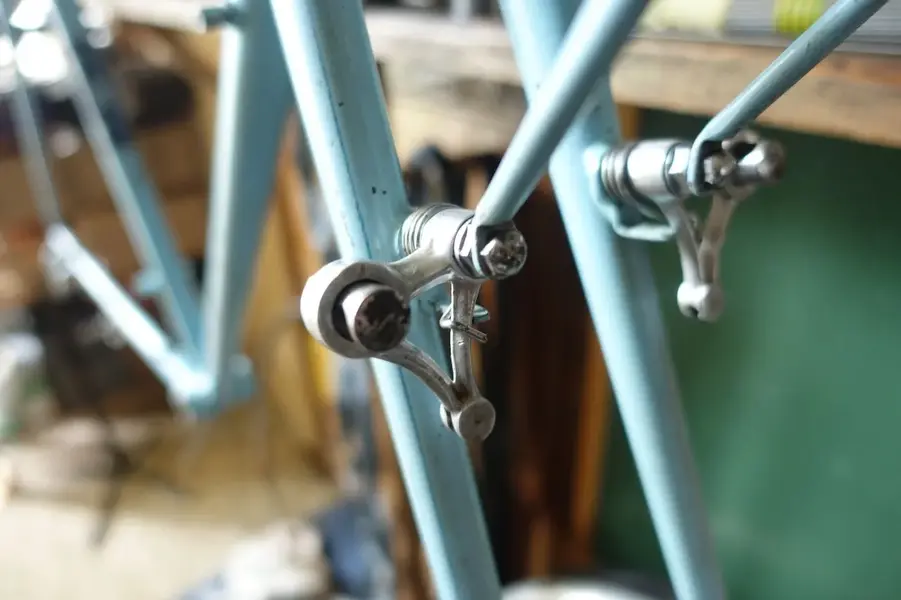 1951 ReneHerse25.webp41.1 KB · Views: 4
1951 ReneHerse25.webp41.1 KB · Views: 4 -
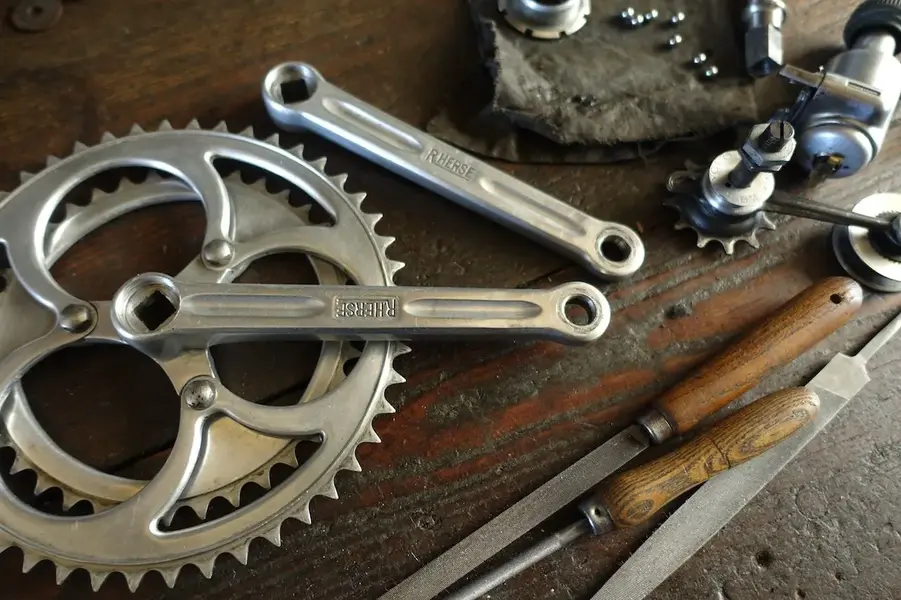 1951 ReneHerse26.webp131 KB · Views: 3
1951 ReneHerse26.webp131 KB · Views: 3 -
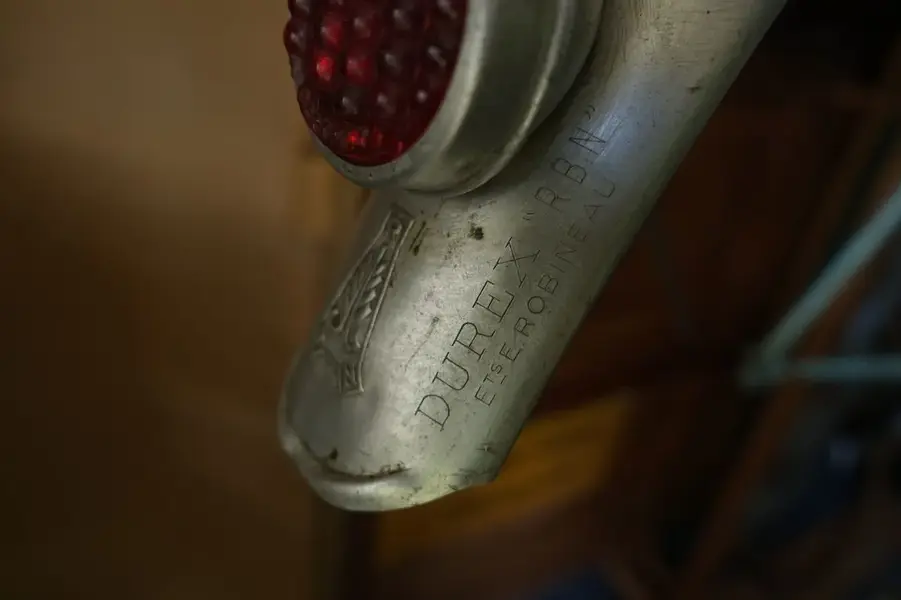 1951 ReneHerse27.webp29.7 KB · Views: 1
1951 ReneHerse27.webp29.7 KB · Views: 1 -
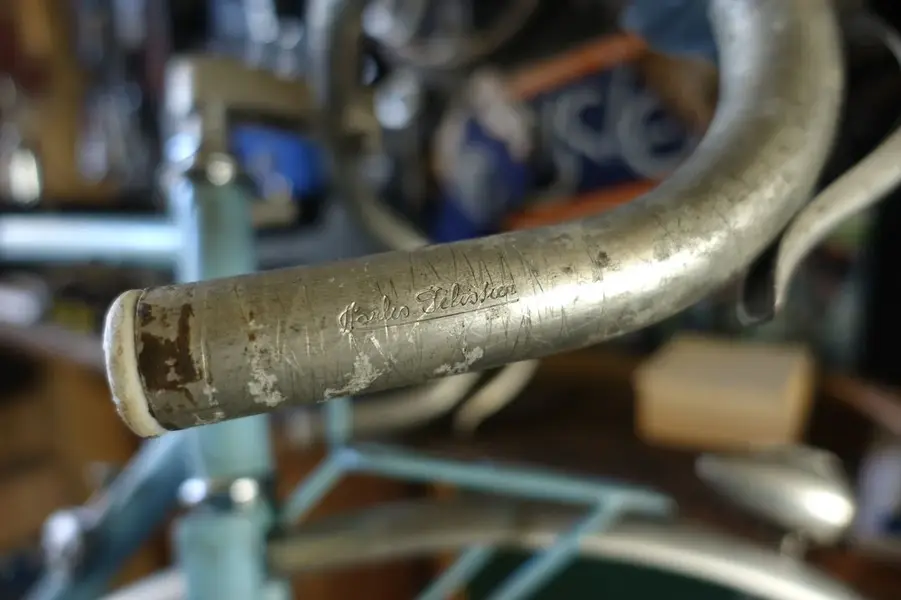 1951 ReneHerse28.webp48.8 KB · Views: 2
1951 ReneHerse28.webp48.8 KB · Views: 2 -
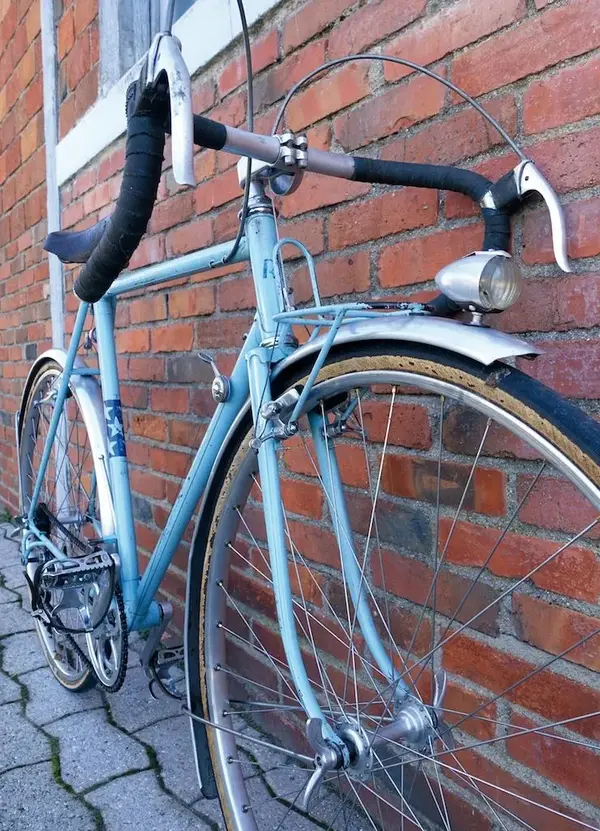 1951 ReneHerse35.webp160.1 KB · Views: 3
1951 ReneHerse35.webp160.1 KB · Views: 3 -
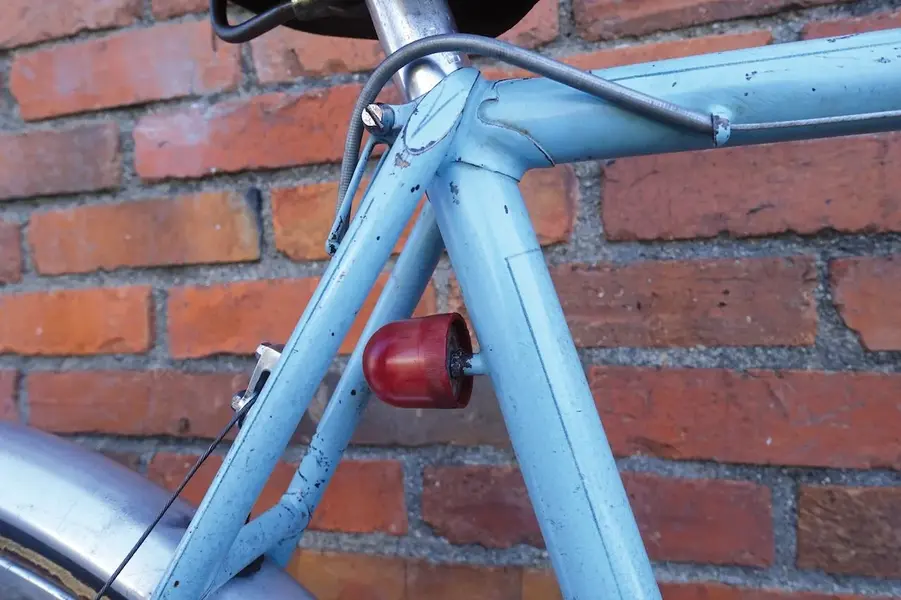 1951 ReneHerse34.webp91.4 KB · Views: 3
1951 ReneHerse34.webp91.4 KB · Views: 3 -
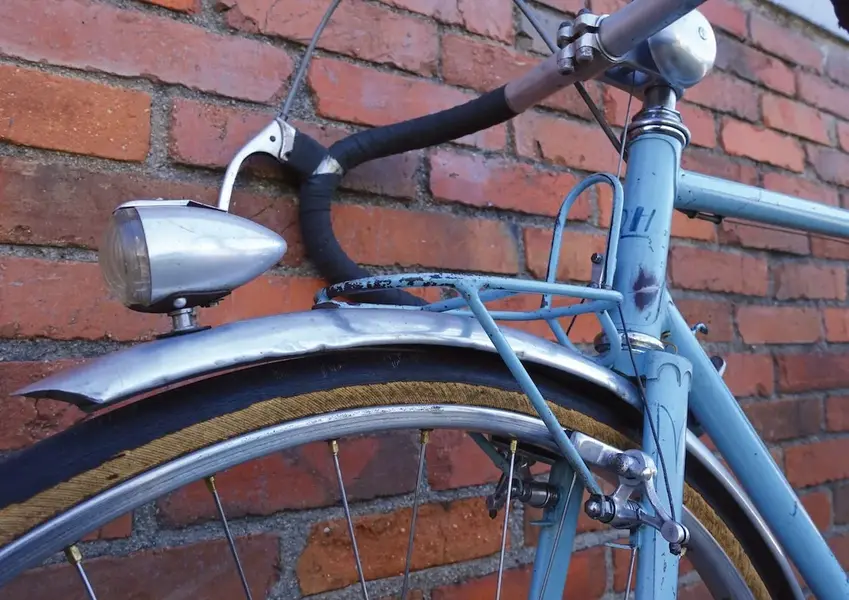 1951 ReneHerse33.webp127.7 KB · Views: 3
1951 ReneHerse33.webp127.7 KB · Views: 3 -
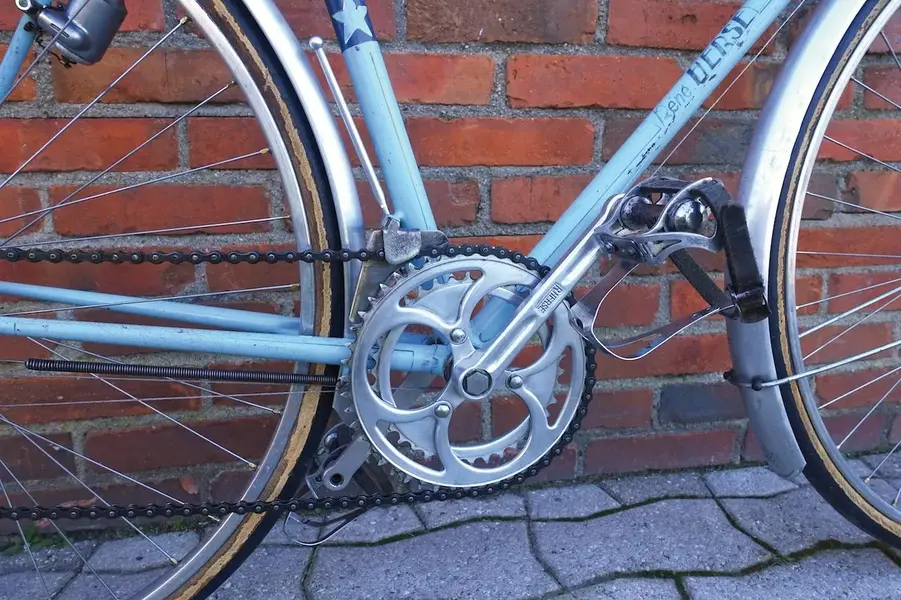 1951 ReneHerse36.webp187.7 KB · Views: 4
1951 ReneHerse36.webp187.7 KB · Views: 4
Guinessisgoodforyou
rBotM Winner
Fin.
Attachments
Guinessisgoodforyou
rBotM Winner
1986 Alex Singer. Translation below.
The web sometimes holds some nice surprises! A Singer randonneur bike number 2761 posted on the bon coin. I phoned and the person told me that "the bike was already reserved for a young person who was coming to see it tomorrow" "I'll let you know if he doesn't take it". The next evening he confirmed that the young person had indeed taken the bike. I tell him how disappointed I am and he tells me that he has a second one with more options, which has the previous number... The deal is quickly concluded in front of the Bièvres town hall and the bike is in my boot!
It's an inheritance, these are the machines of a couple of cyclists who had their bikes made by Ernest...
This one is particularly well finished and well equipped. It's made for long rides. It has "camper" options such as removable pannier racks made of custom chrome-plated hollow tubes. A clever rear pack carrier attached to the seat tube and brake pads and not attached to the fender. Bracket and torch. The dynamo release lever (Sanyo placed under the bottom bracket) is located under the down tube just next to the derailleur levers. Home-made bag shifter at the front. The bike has obviously competed, as evidenced by the specially brazed-on bracket under the top tube for hanging the competition number plate.
Top of the line finishing details: chrome fittings and seatstays, mudguard reinforcements, hand painted fillets on the mudguards. Brake cable routing in the tube.
Size 54 X 56
700 wheels. Wolber gentleman rims, Maxicar hubs, 4-way spoked
Derailleurs, Campagnolo crankset
Atax stem and Philippe handlebars
Mafac 2000 brakes
Brooks Professional short frame saddle.
The bike is strictly in its original condition. As it is exactly my size and I plan to ride it, I changed the tyres.
An exceptional tourer made for the road!
The web sometimes holds some nice surprises! A Singer randonneur bike number 2761 posted on the bon coin. I phoned and the person told me that "the bike was already reserved for a young person who was coming to see it tomorrow" "I'll let you know if he doesn't take it". The next evening he confirmed that the young person had indeed taken the bike. I tell him how disappointed I am and he tells me that he has a second one with more options, which has the previous number... The deal is quickly concluded in front of the Bièvres town hall and the bike is in my boot!
It's an inheritance, these are the machines of a couple of cyclists who had their bikes made by Ernest...
This one is particularly well finished and well equipped. It's made for long rides. It has "camper" options such as removable pannier racks made of custom chrome-plated hollow tubes. A clever rear pack carrier attached to the seat tube and brake pads and not attached to the fender. Bracket and torch. The dynamo release lever (Sanyo placed under the bottom bracket) is located under the down tube just next to the derailleur levers. Home-made bag shifter at the front. The bike has obviously competed, as evidenced by the specially brazed-on bracket under the top tube for hanging the competition number plate.
Top of the line finishing details: chrome fittings and seatstays, mudguard reinforcements, hand painted fillets on the mudguards. Brake cable routing in the tube.
Size 54 X 56
700 wheels. Wolber gentleman rims, Maxicar hubs, 4-way spoked
Derailleurs, Campagnolo crankset
Atax stem and Philippe handlebars
Mafac 2000 brakes
Brooks Professional short frame saddle.
The bike is strictly in its original condition. As it is exactly my size and I plan to ride it, I changed the tyres.
An exceptional tourer made for the road!
Attachments
-
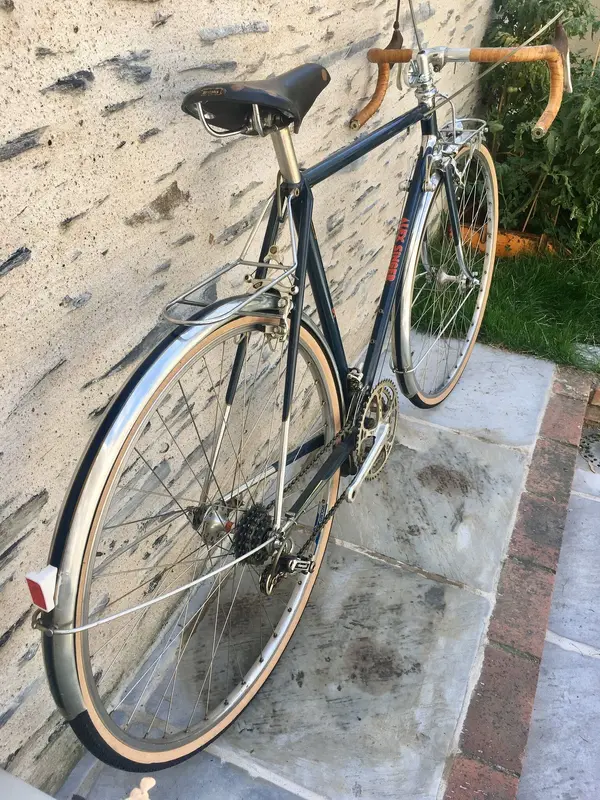 1986 AlexSinger 1.webp760.1 KB · Views: 12
1986 AlexSinger 1.webp760.1 KB · Views: 12 -
 1986 AlexSinger 10.webp538.2 KB · Views: 14
1986 AlexSinger 10.webp538.2 KB · Views: 14 -
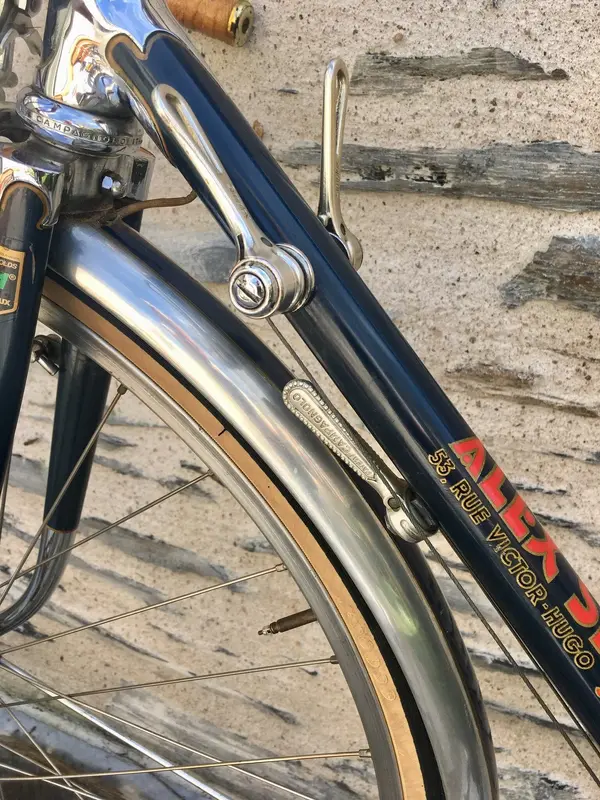 1986 AlexSinger 9.webp455.7 KB · Views: 13
1986 AlexSinger 9.webp455.7 KB · Views: 13 -
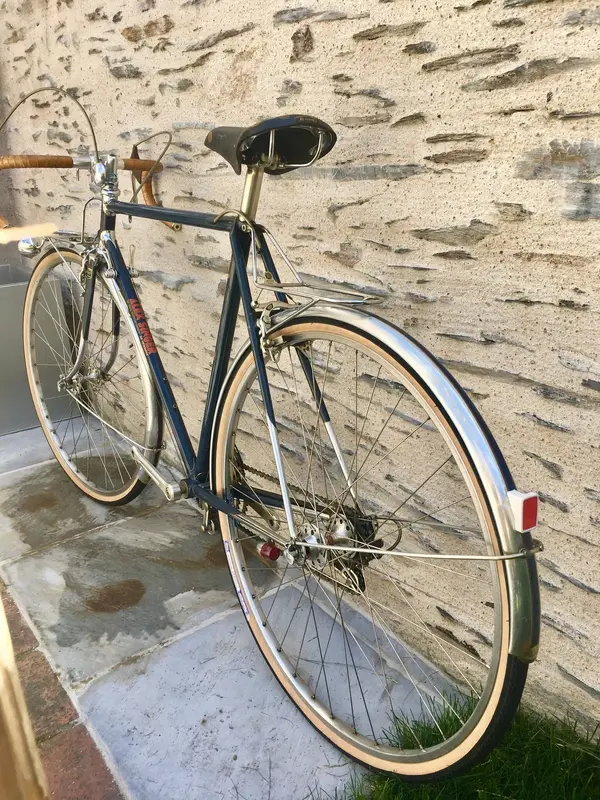 1986 AlexSinger 8.webp713.6 KB · Views: 13
1986 AlexSinger 8.webp713.6 KB · Views: 13 -
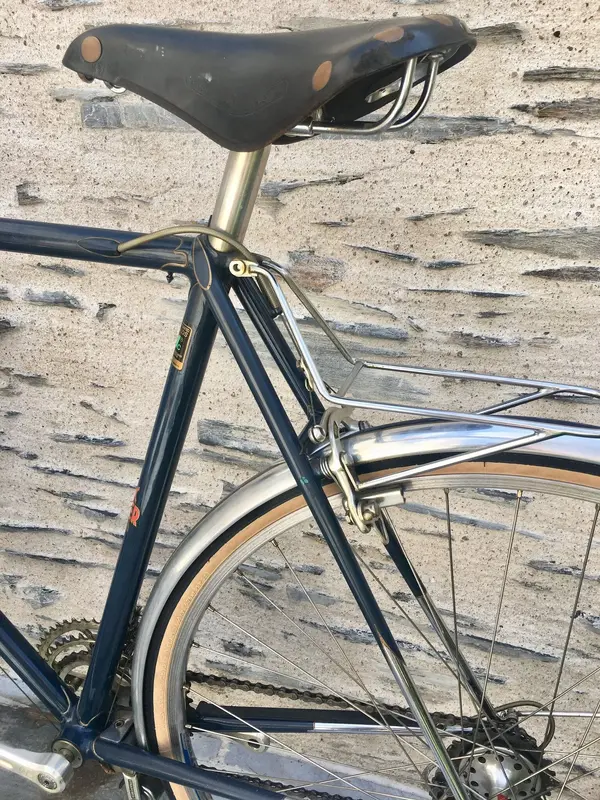 1986 AlexSinger 7.webp785.4 KB · Views: 14
1986 AlexSinger 7.webp785.4 KB · Views: 14 -
 1986 AlexSinger 6.webp797.8 KB · Views: 14
1986 AlexSinger 6.webp797.8 KB · Views: 14 -
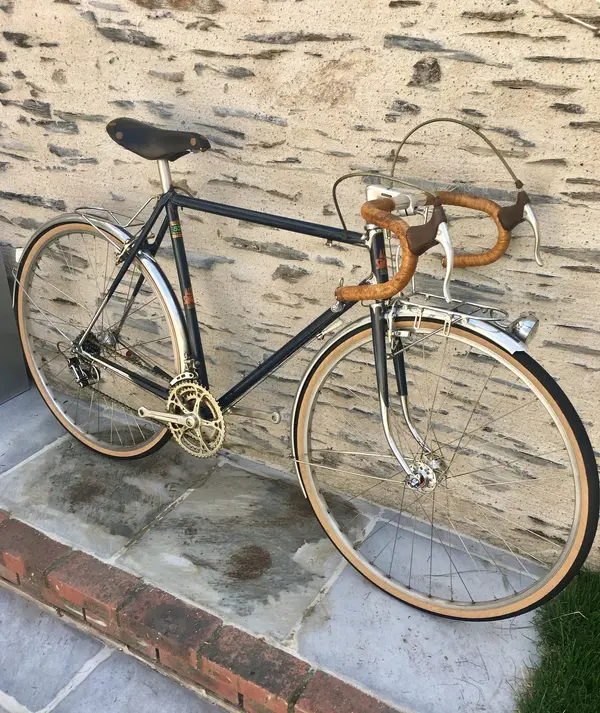 1986 AlexSinger 5.webp680.5 KB · Views: 17
1986 AlexSinger 5.webp680.5 KB · Views: 17 -
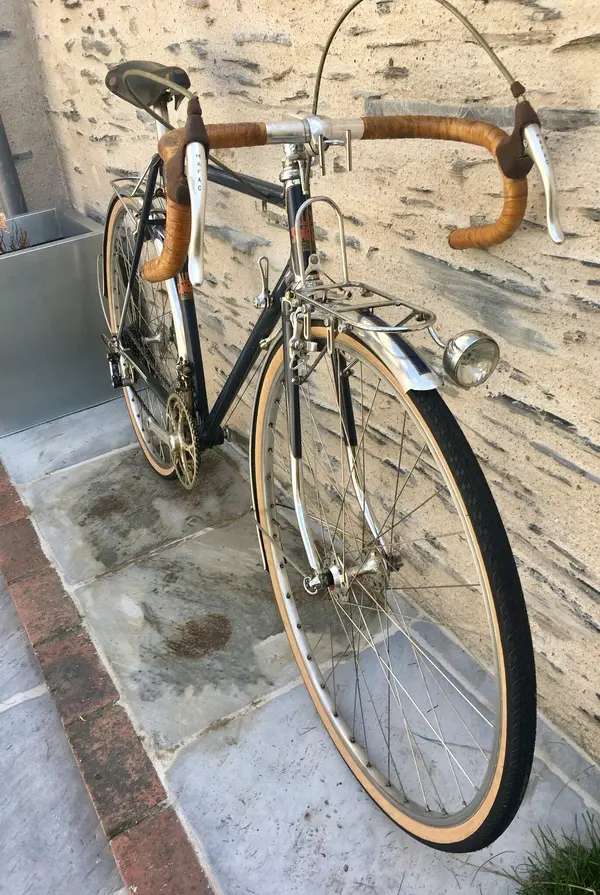 1986 AlexSinger 4.webp510.3 KB · Views: 18
1986 AlexSinger 4.webp510.3 KB · Views: 18 -
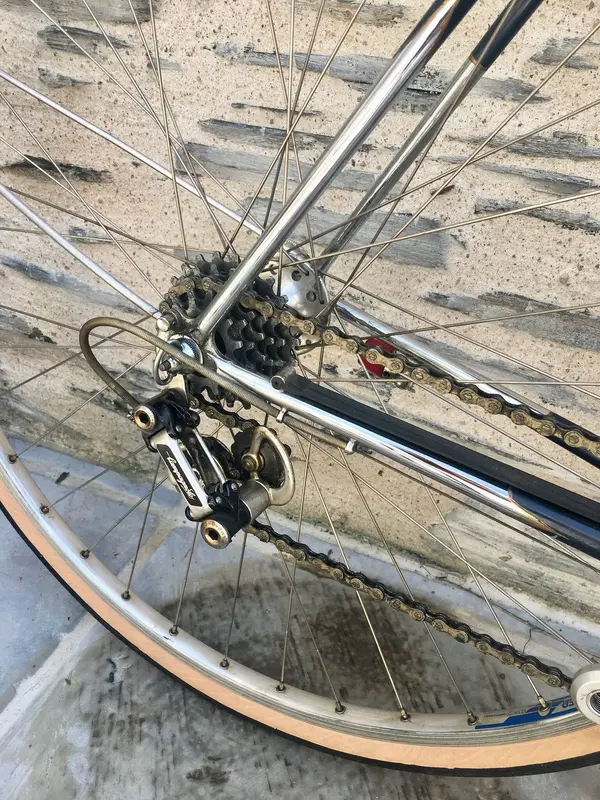 1986 AlexSinger 3.webp661.2 KB · Views: 13
1986 AlexSinger 3.webp661.2 KB · Views: 13 -
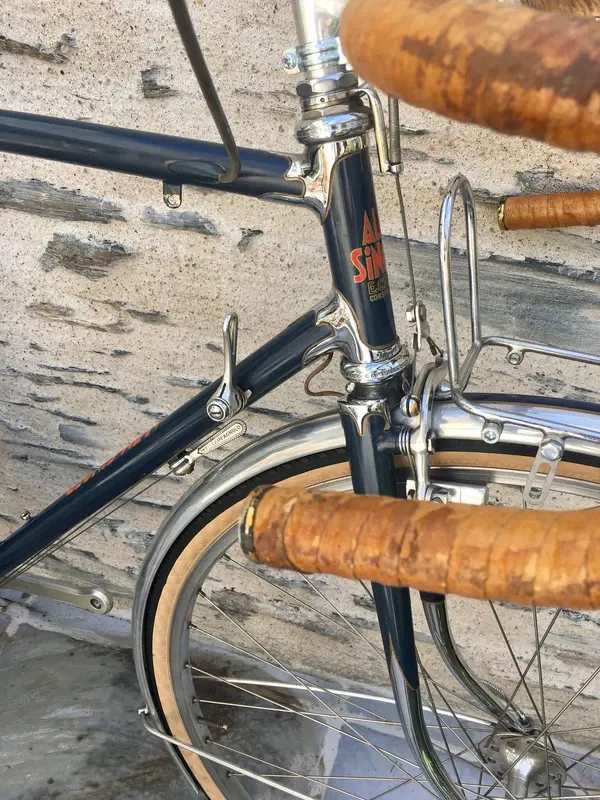 1986 AlexSinger 2.webp613.3 KB · Views: 12
1986 AlexSinger 2.webp613.3 KB · Views: 12
Guinessisgoodforyou
rBotM Winner
Fin.
Attachments
-
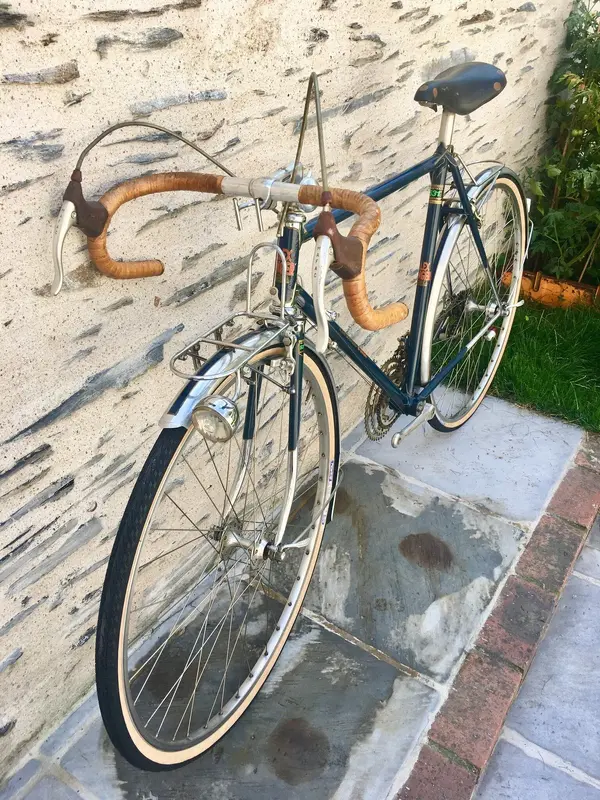 1986 AlexSinger 11.webp763.3 KB · Views: 3
1986 AlexSinger 11.webp763.3 KB · Views: 3 -
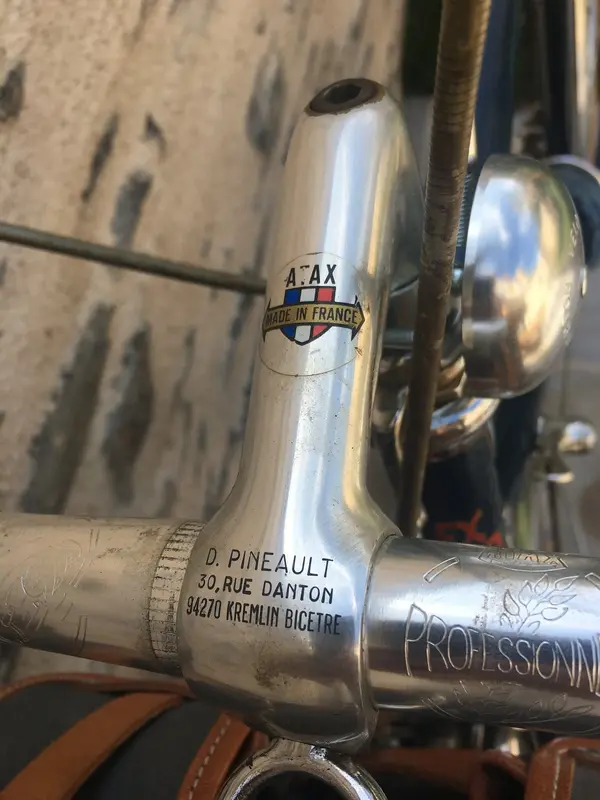 1986 AlexSinger 12.webp205.1 KB · Views: 3
1986 AlexSinger 12.webp205.1 KB · Views: 3 -
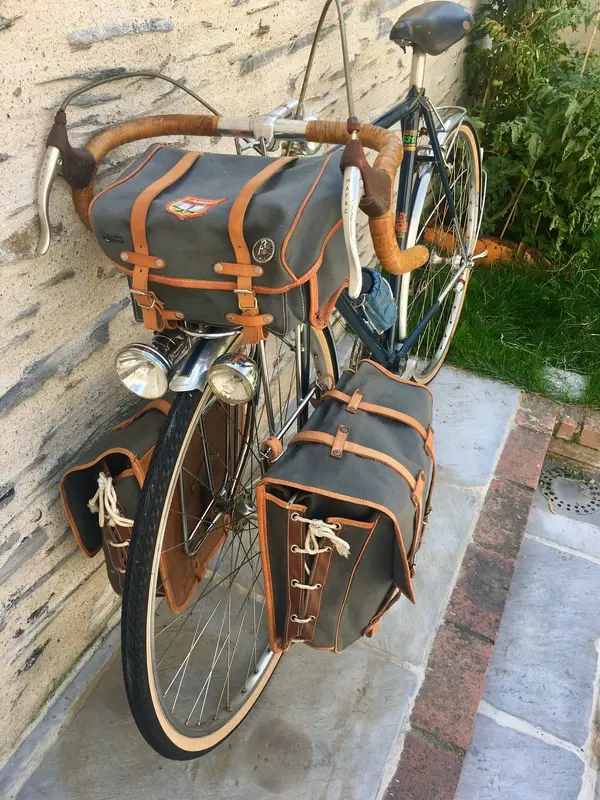 1986 AlexSinger 13.webp648.6 KB · Views: 5
1986 AlexSinger 13.webp648.6 KB · Views: 5 -
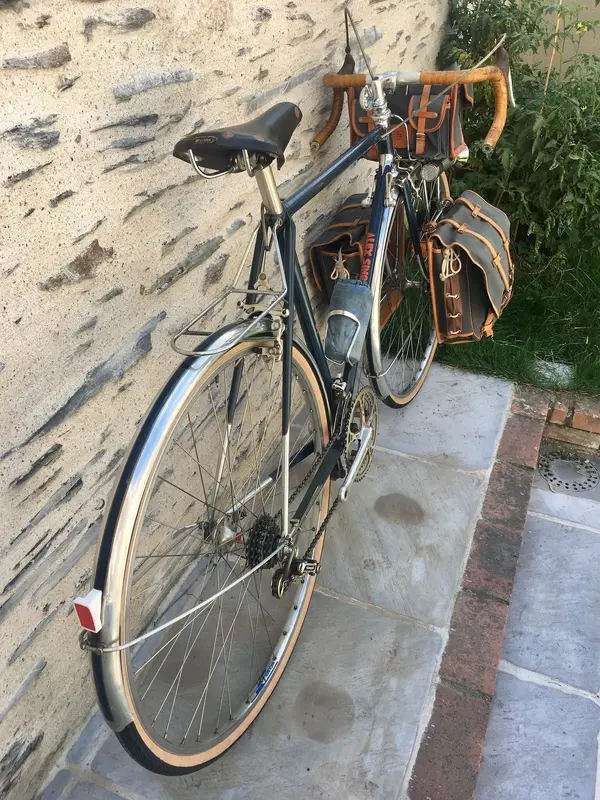 1986 AlexSinger 14.webp732.9 KB · Views: 5
1986 AlexSinger 14.webp732.9 KB · Views: 5 -
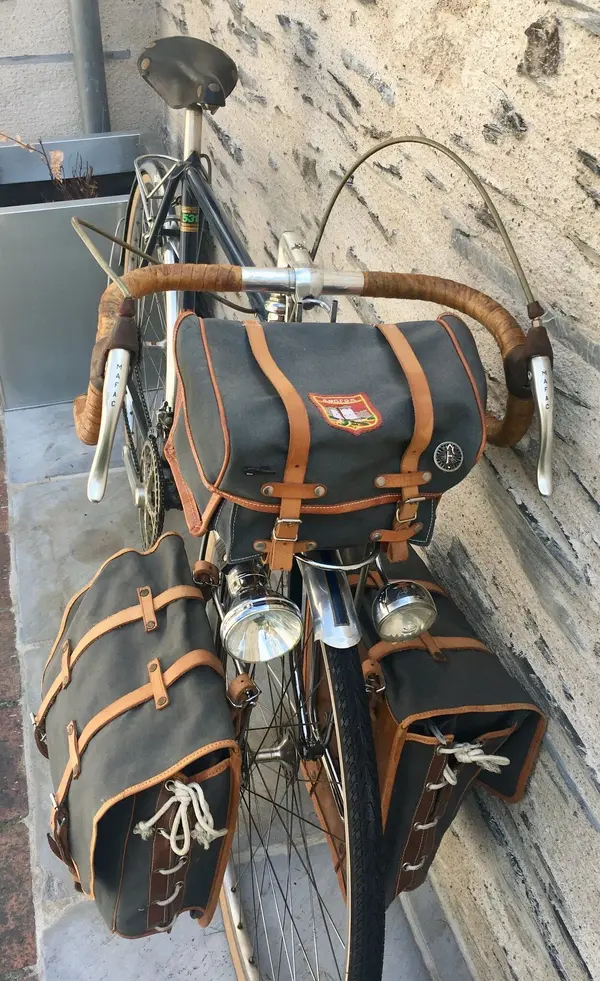 1986 AlexSinger 15.webp454.2 KB · Views: 6
1986 AlexSinger 15.webp454.2 KB · Views: 6 -
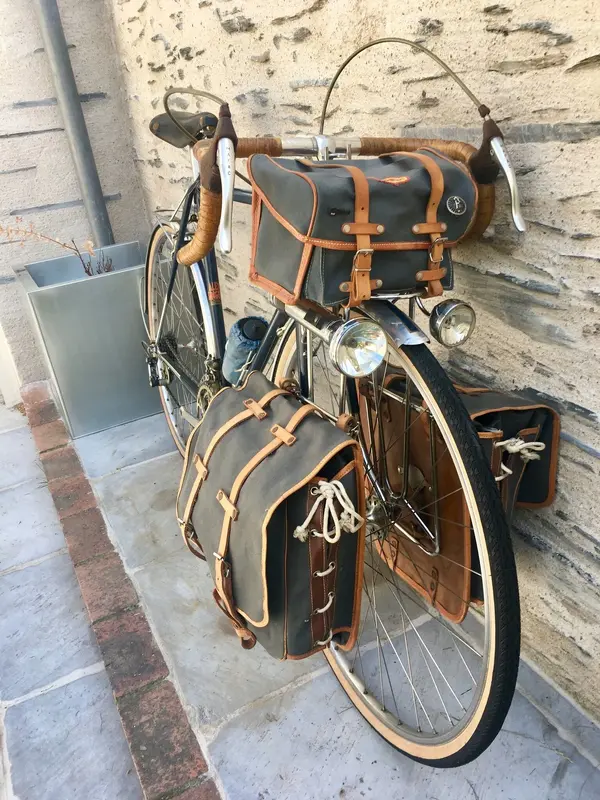 1986 AlexSinger 16.webp491 KB · Views: 5
1986 AlexSinger 16.webp491 KB · Views: 5 -
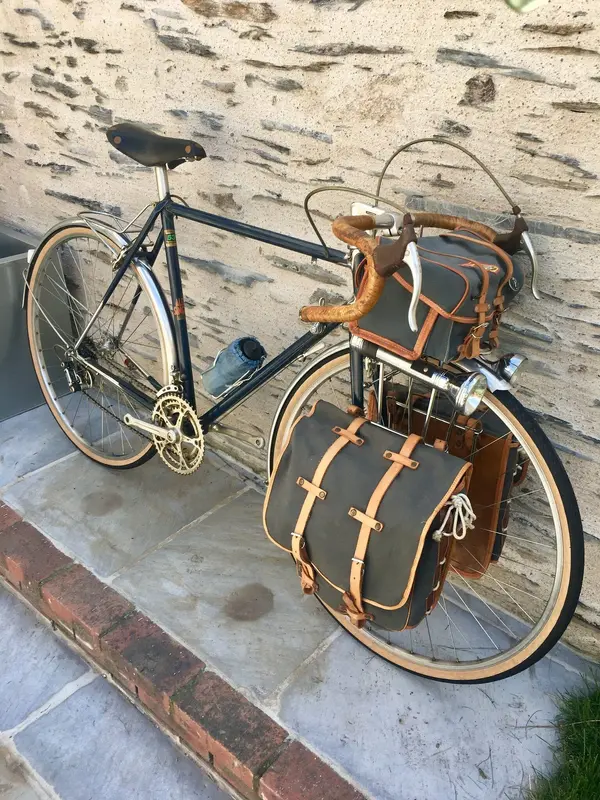 1986 AlexSinger 17.webp603.4 KB · Views: 5
1986 AlexSinger 17.webp603.4 KB · Views: 5 -
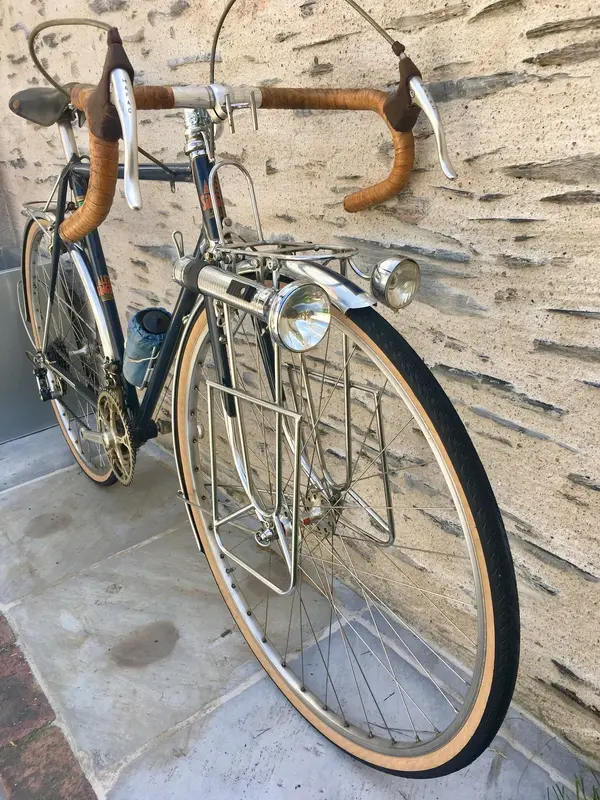 1986 AlexSinger 18.webp667.3 KB · Views: 5
1986 AlexSinger 18.webp667.3 KB · Views: 5 -
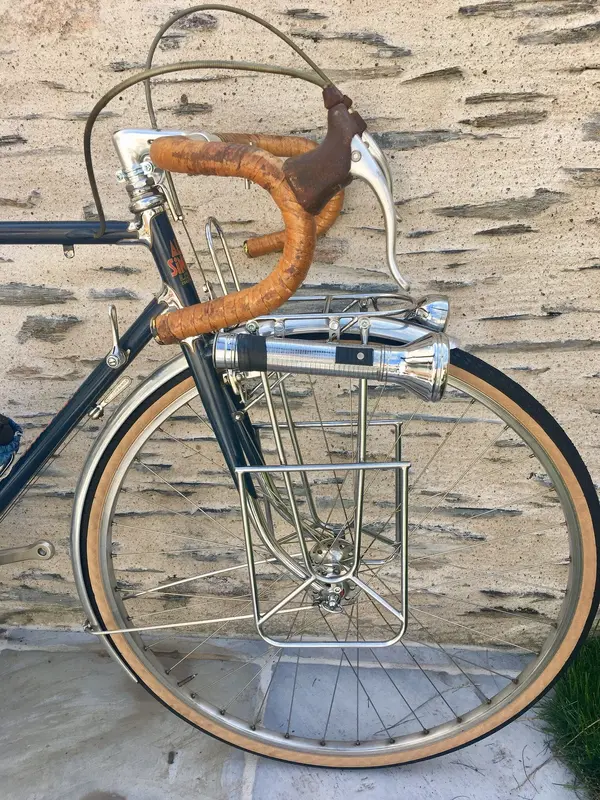 1986 AlexSinger 19.webp813.4 KB · Views: 4
1986 AlexSinger 19.webp813.4 KB · Views: 4
Guinessisgoodforyou
rBotM Winner
Gnome Rhone, translation below.
A couple of Gnome Rhône city bikes in aluminium (at least the 3 main tubes and most of the parts)
Mr. and Mrs. (Mrs. rides a man's frame when he knows aluminium because women's frames are really too soft!)
There is not much literature on the production of bicycles of this brand, rather a specialist in aircraft engines, then motorbikes. They would have been produced for about ten years between 1945 and 1955.
I find these aluminium bikes, duralumin, very endearing, in fact I love them! They represent a whole era, and the efforts of manufacturers to tame this new raw material very promising and used in aviation.
These two models are a joy for me and my sweetheart to go picnicking on the banks of the Maine or the Loire!
A couple of Gnome Rhône city bikes in aluminium (at least the 3 main tubes and most of the parts)
Mr. and Mrs. (Mrs. rides a man's frame when he knows aluminium because women's frames are really too soft!)
There is not much literature on the production of bicycles of this brand, rather a specialist in aircraft engines, then motorbikes. They would have been produced for about ten years between 1945 and 1955.
I find these aluminium bikes, duralumin, very endearing, in fact I love them! They represent a whole era, and the efforts of manufacturers to tame this new raw material very promising and used in aviation.
These two models are a joy for me and my sweetheart to go picnicking on the banks of the Maine or the Loire!
Attachments
-
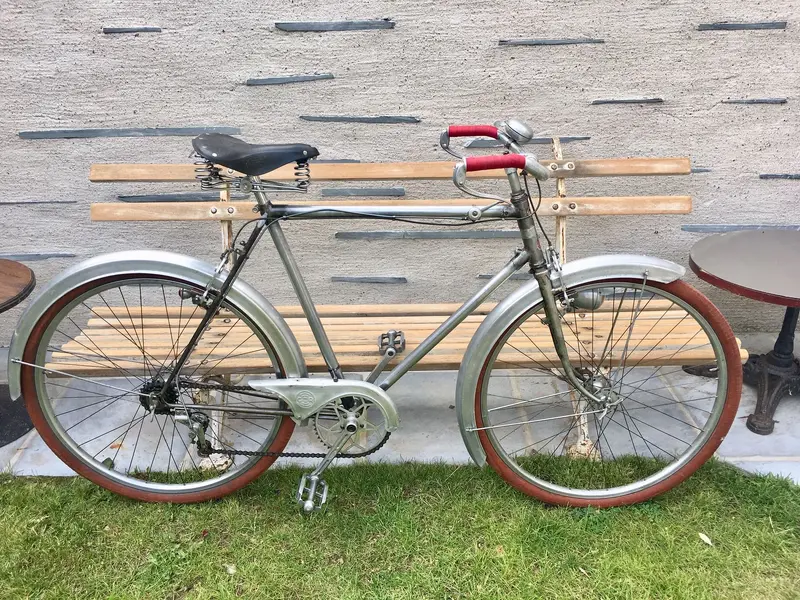 HisnHers Gnome1.webp892.1 KB · Views: 8
HisnHers Gnome1.webp892.1 KB · Views: 8 -
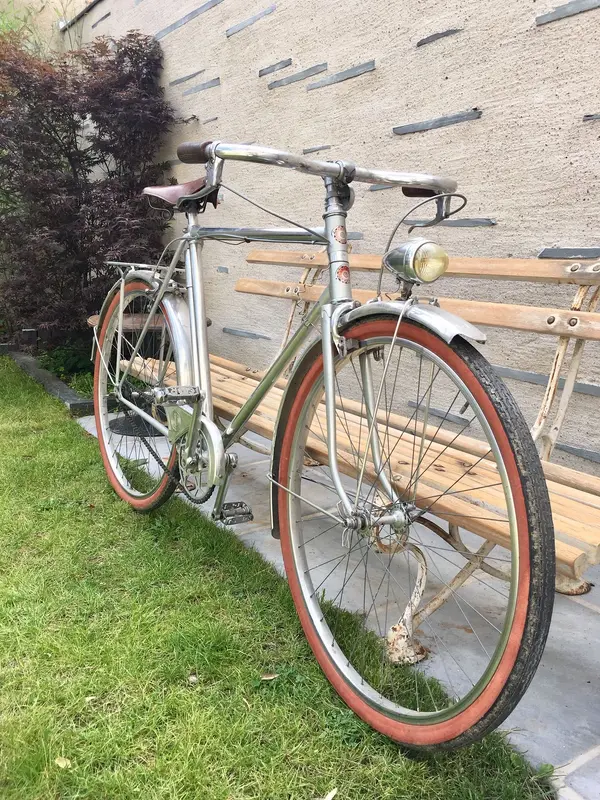 HisnHers Gnome10.webp852.9 KB · Views: 8
HisnHers Gnome10.webp852.9 KB · Views: 8 -
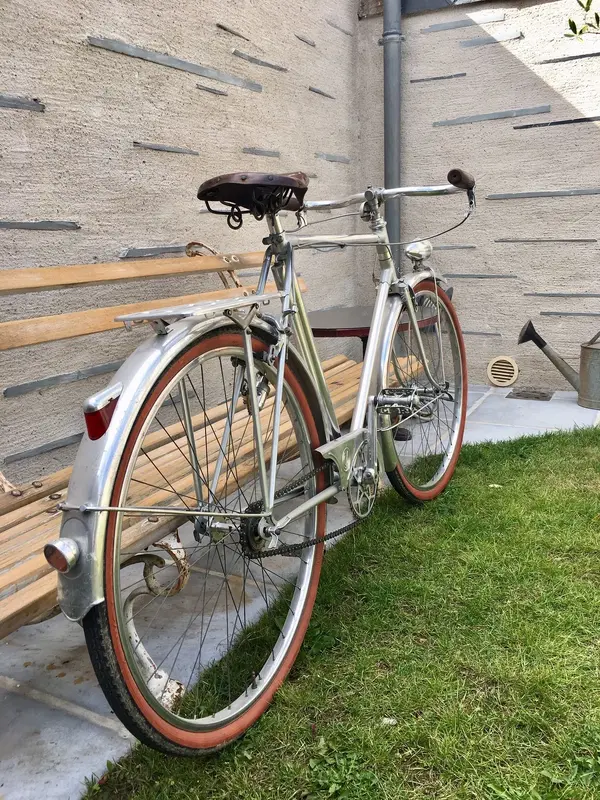 HisnHers Gnome9.webp852.7 KB · Views: 6
HisnHers Gnome9.webp852.7 KB · Views: 6 -
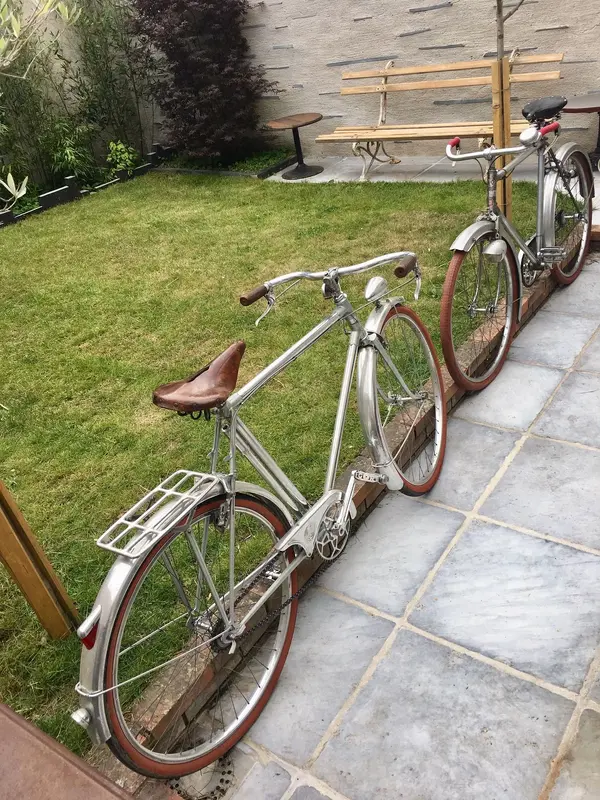 HisnHers Gnome8.webp739.6 KB · Views: 8
HisnHers Gnome8.webp739.6 KB · Views: 8 -
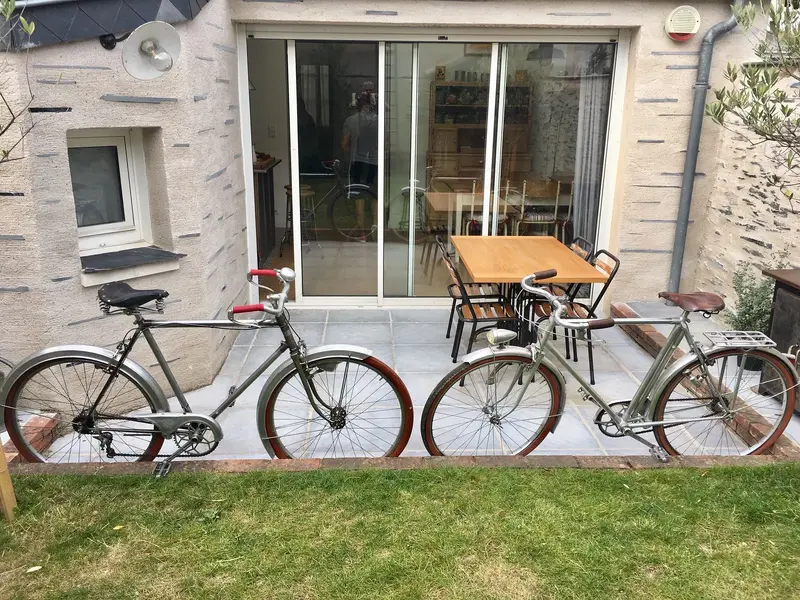 HisnHers Gnome7.webp715.6 KB · Views: 7
HisnHers Gnome7.webp715.6 KB · Views: 7 -
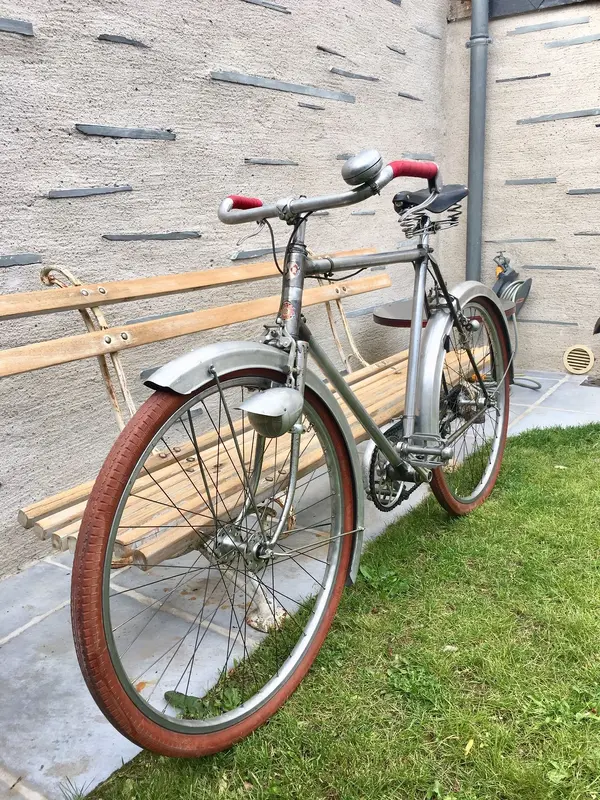 HisnHers Gnome6.webp885.3 KB · Views: 5
HisnHers Gnome6.webp885.3 KB · Views: 5 -
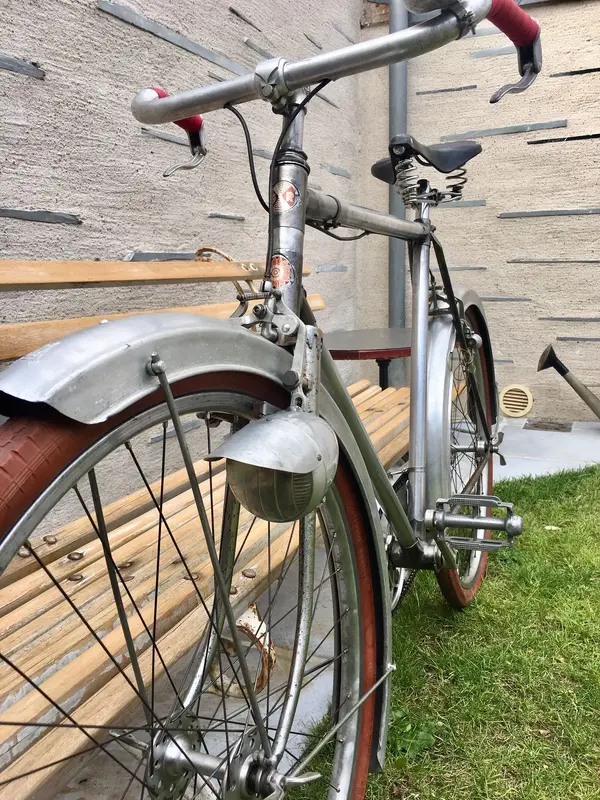 HisnHers Gnome5.webp663 KB · Views: 7
HisnHers Gnome5.webp663 KB · Views: 7 -
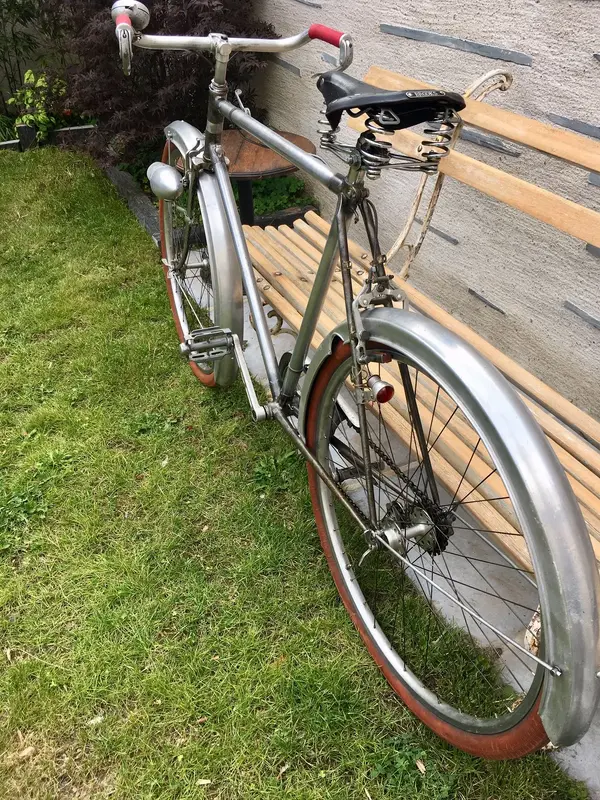 HisnHers Gnome4.webp918.9 KB · Views: 5
HisnHers Gnome4.webp918.9 KB · Views: 5 -
 HisnHers Gnome3.webp1.1 MB · Views: 5
HisnHers Gnome3.webp1.1 MB · Views: 5 -
 HisnHers Gnome2.webp881.9 KB · Views: 7
HisnHers Gnome2.webp881.9 KB · Views: 7
Guinessisgoodforyou
rBotM Winner
Guinessisgoodforyou
rBotM Winner
@Mickeyspinn Better pictures of the brakes you were interested in.
